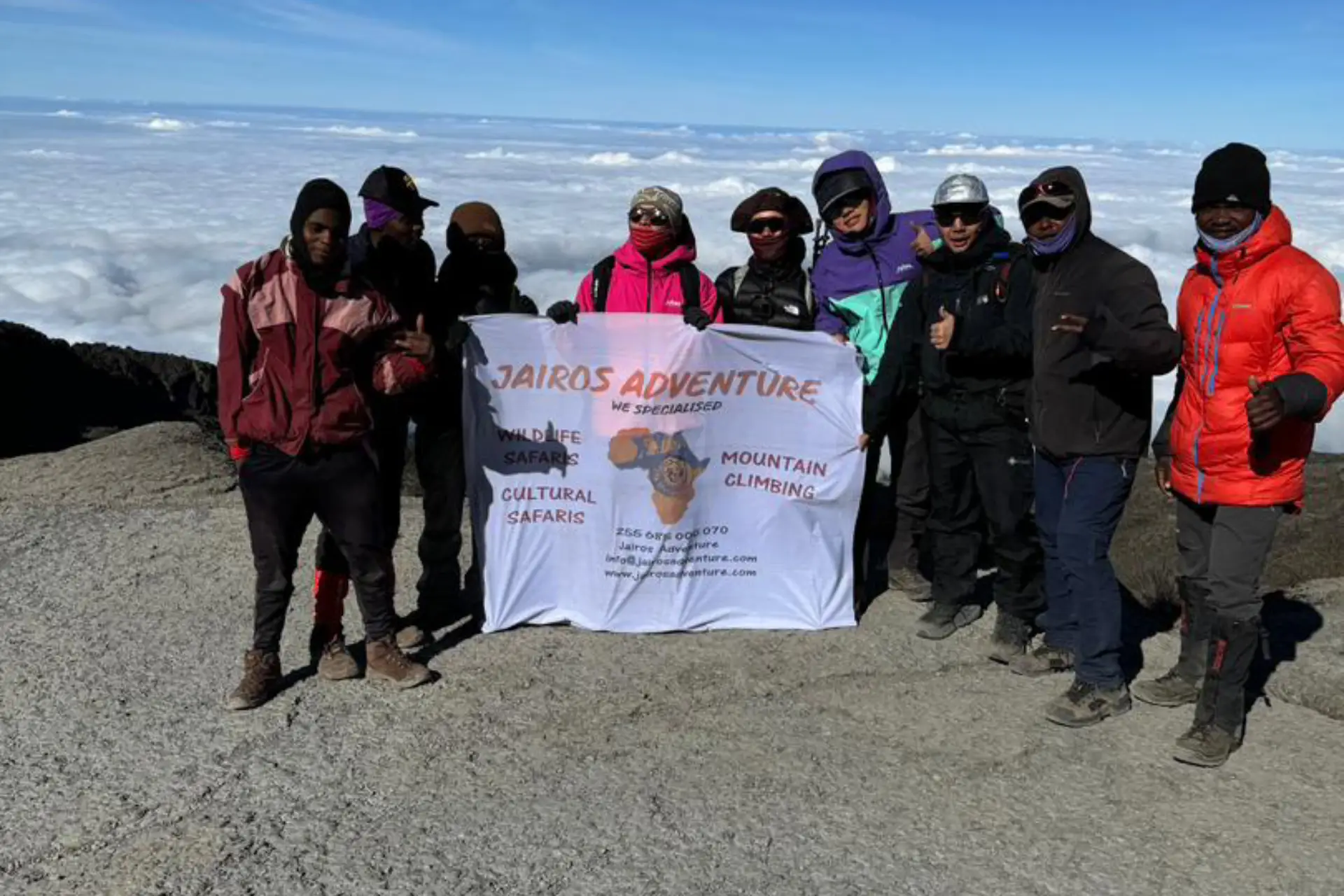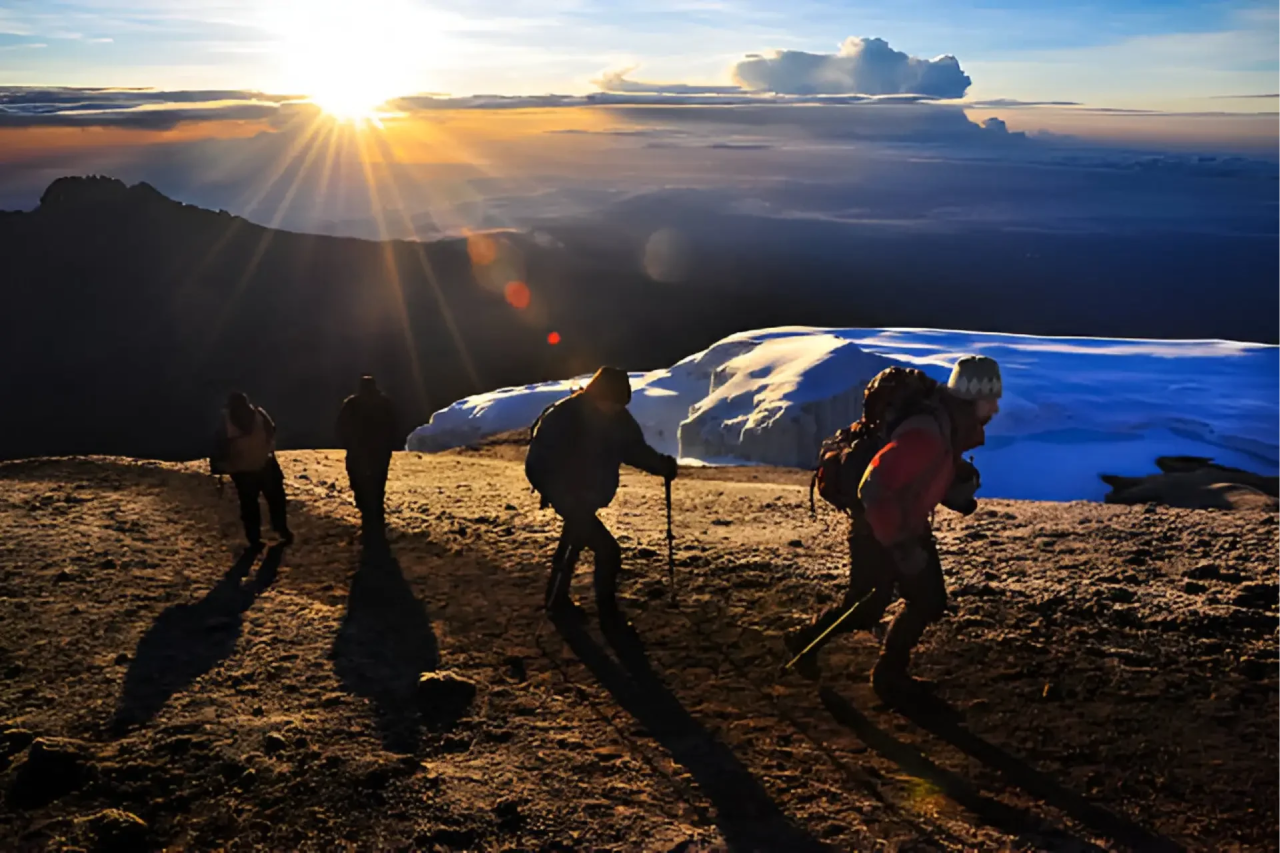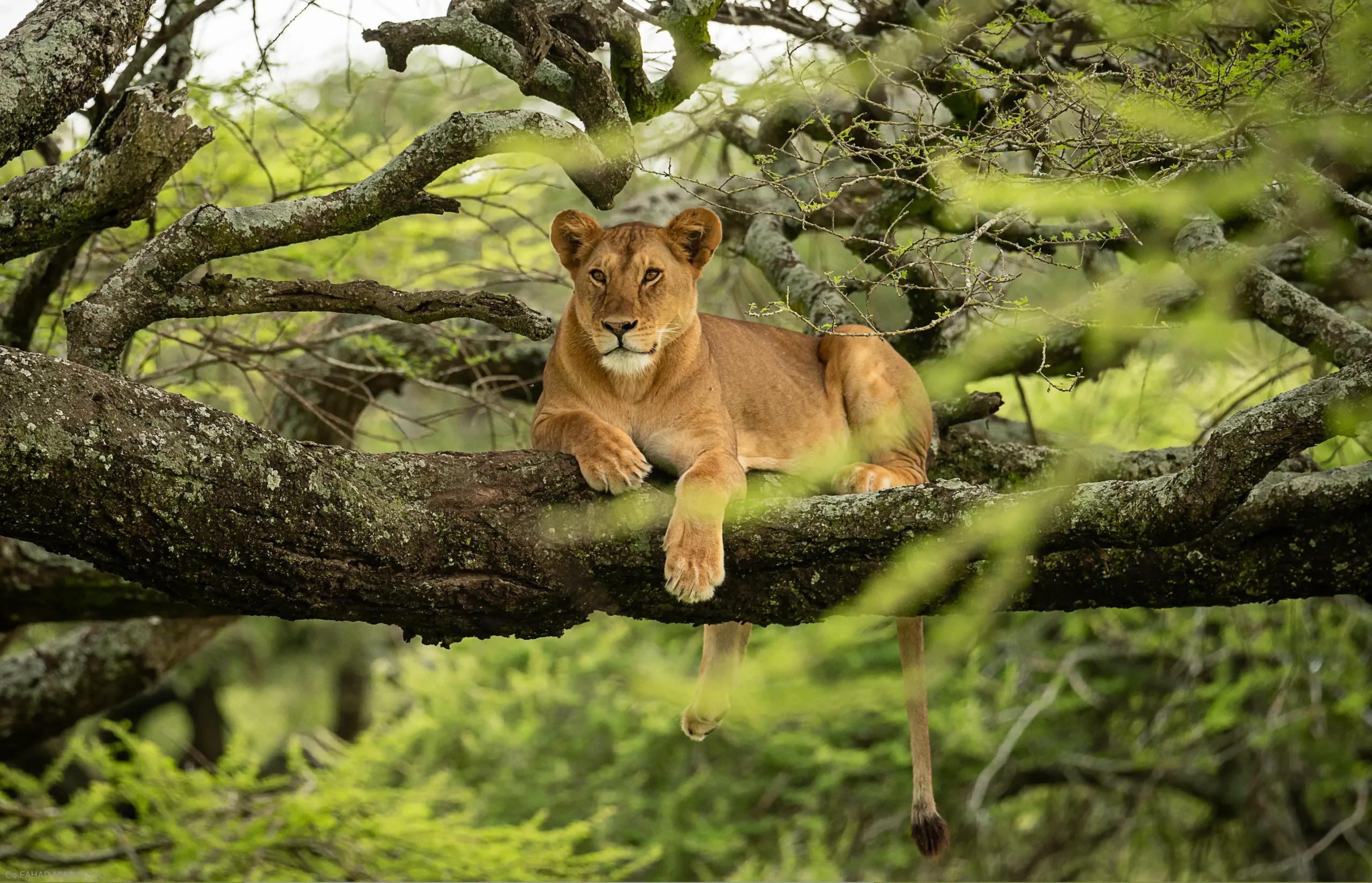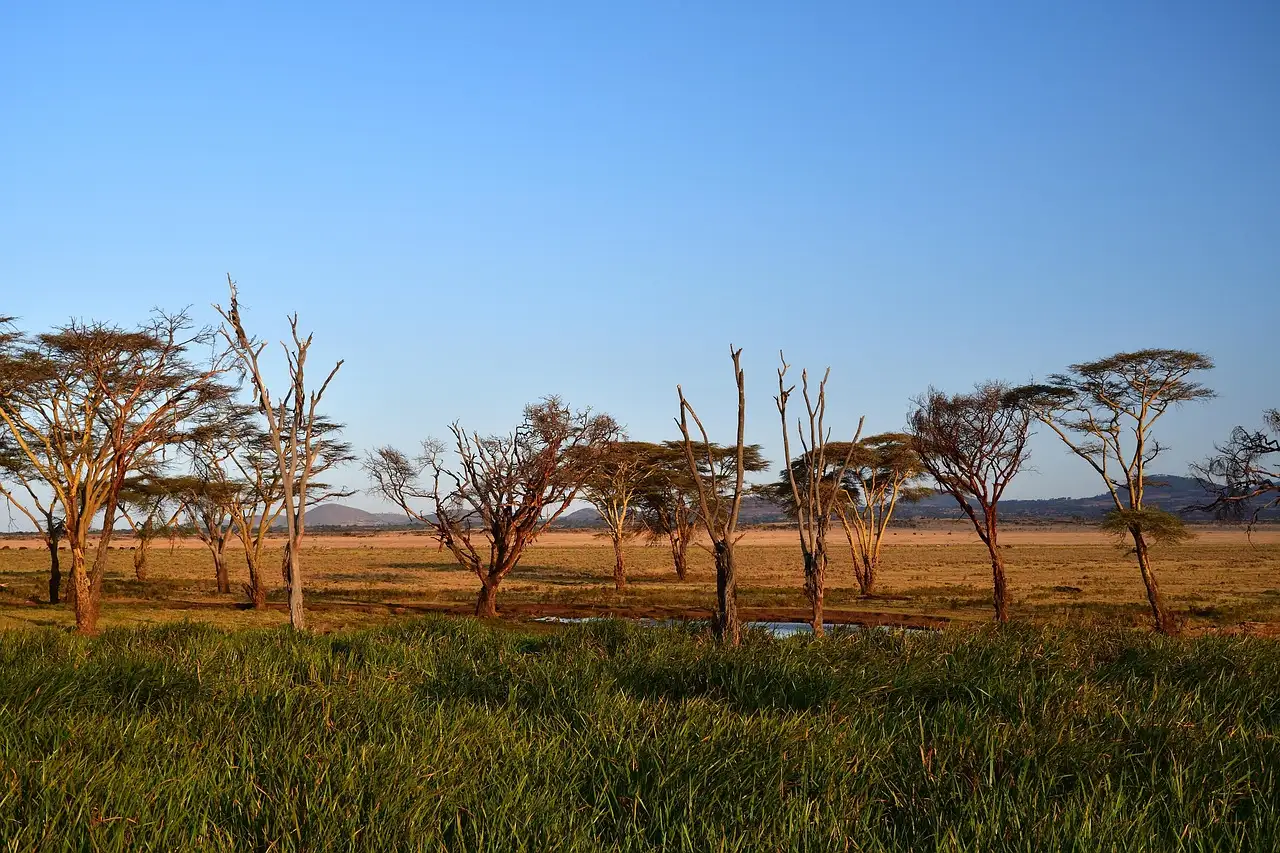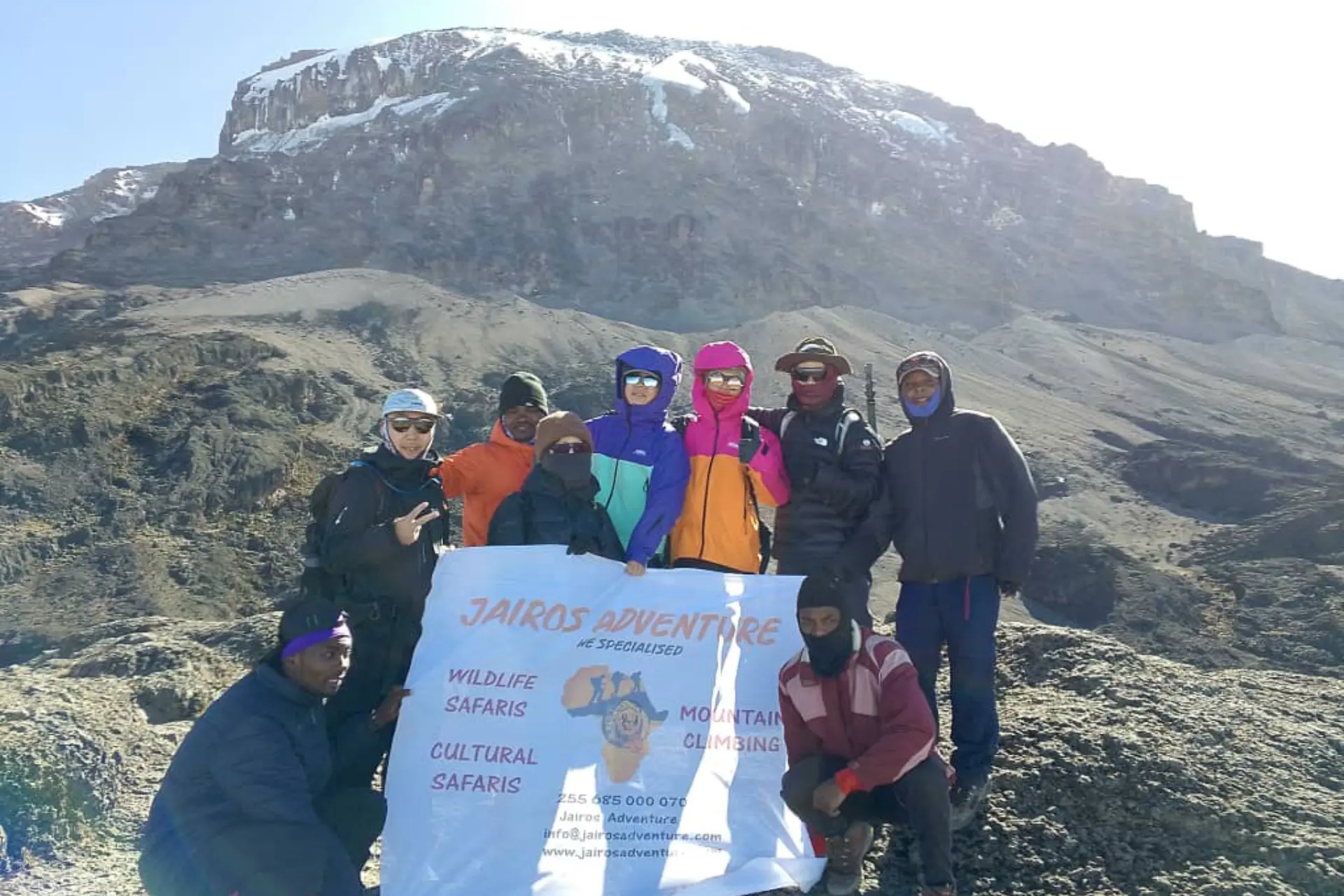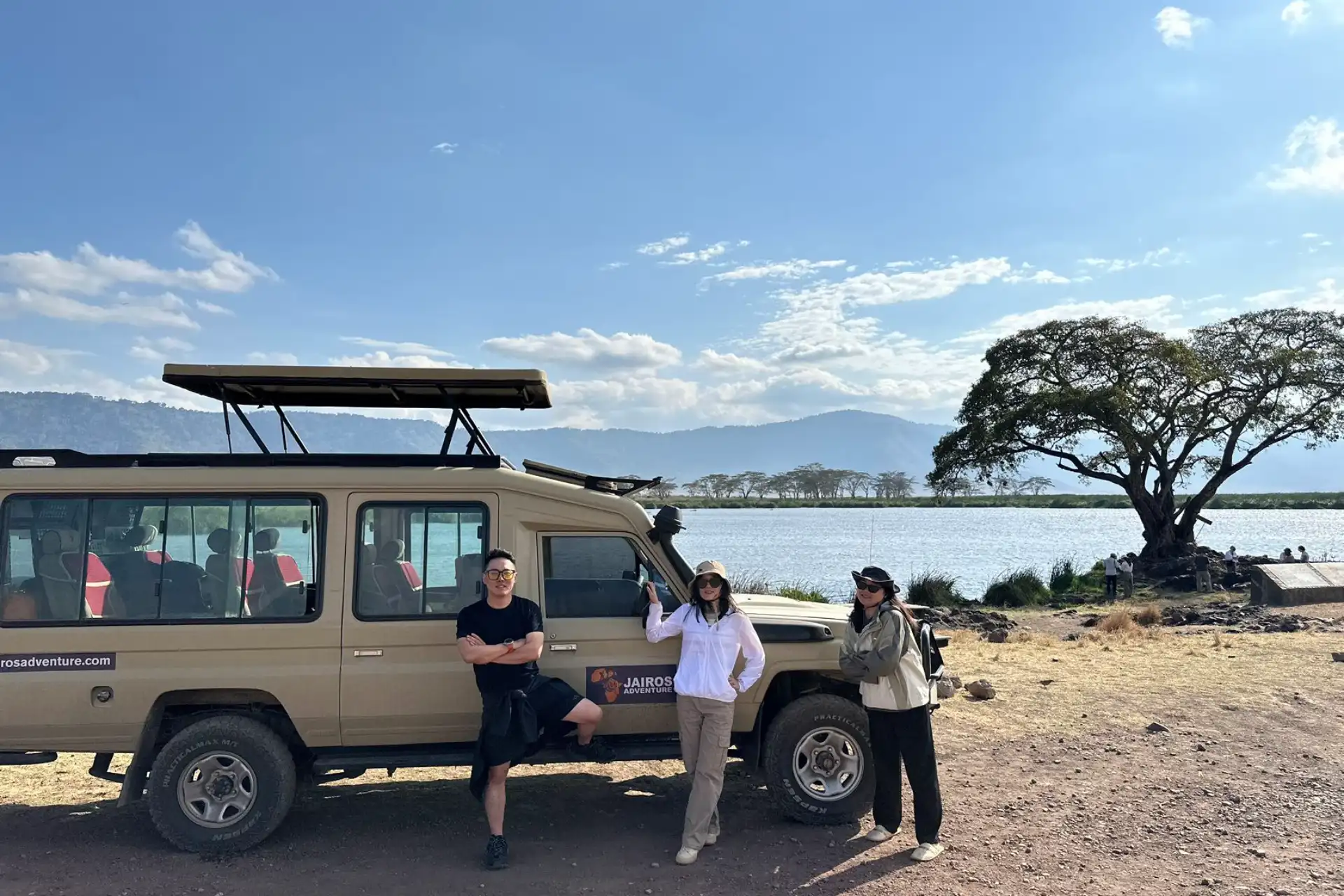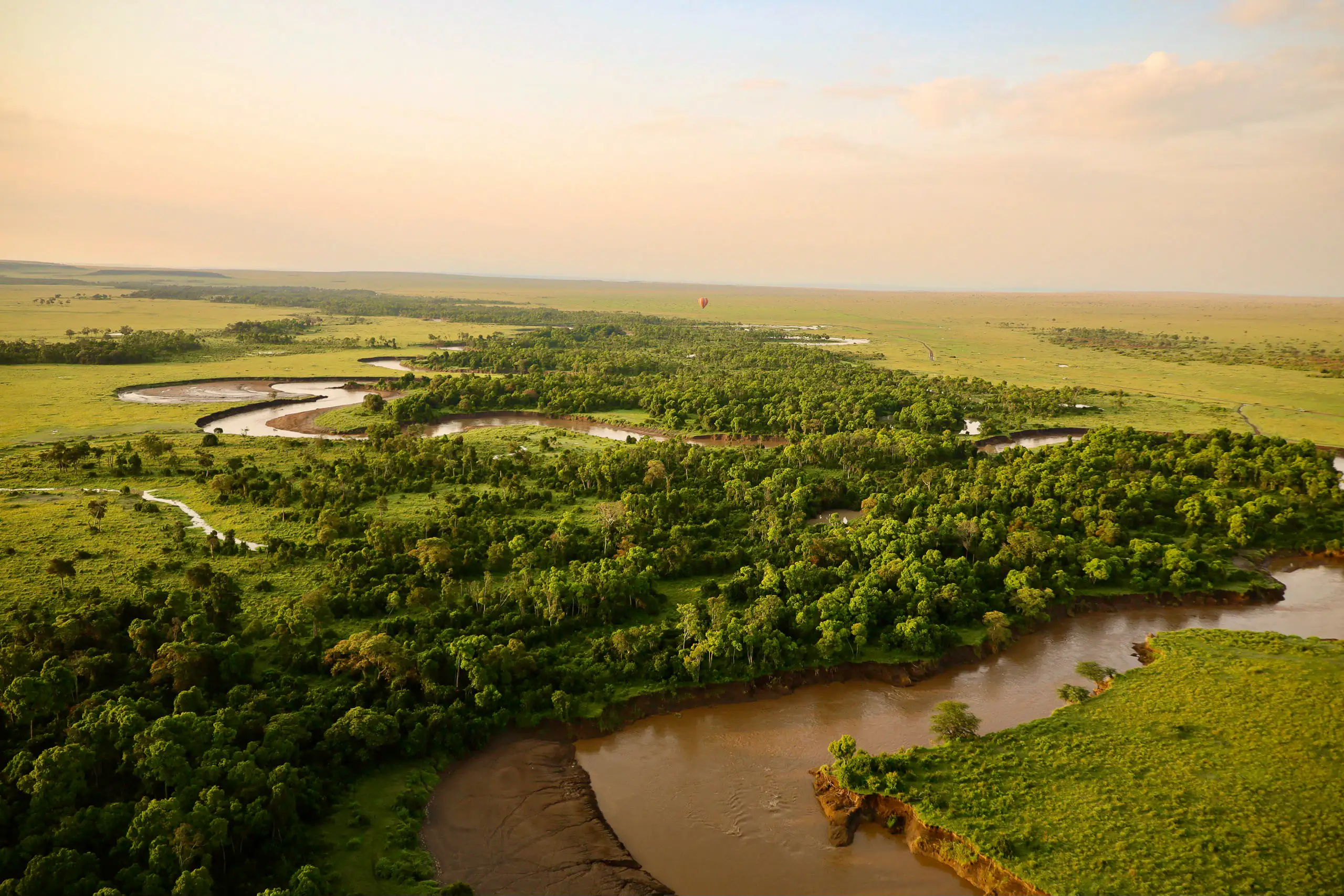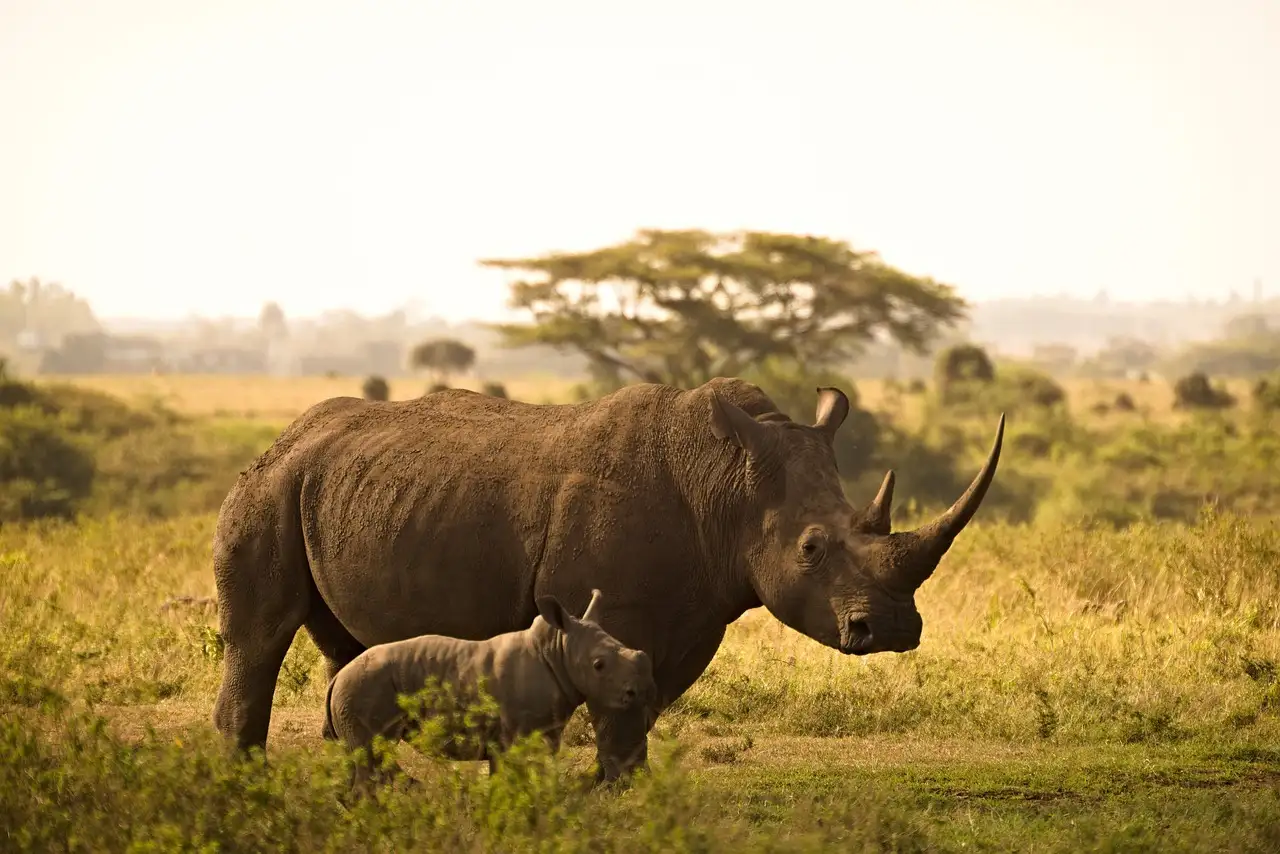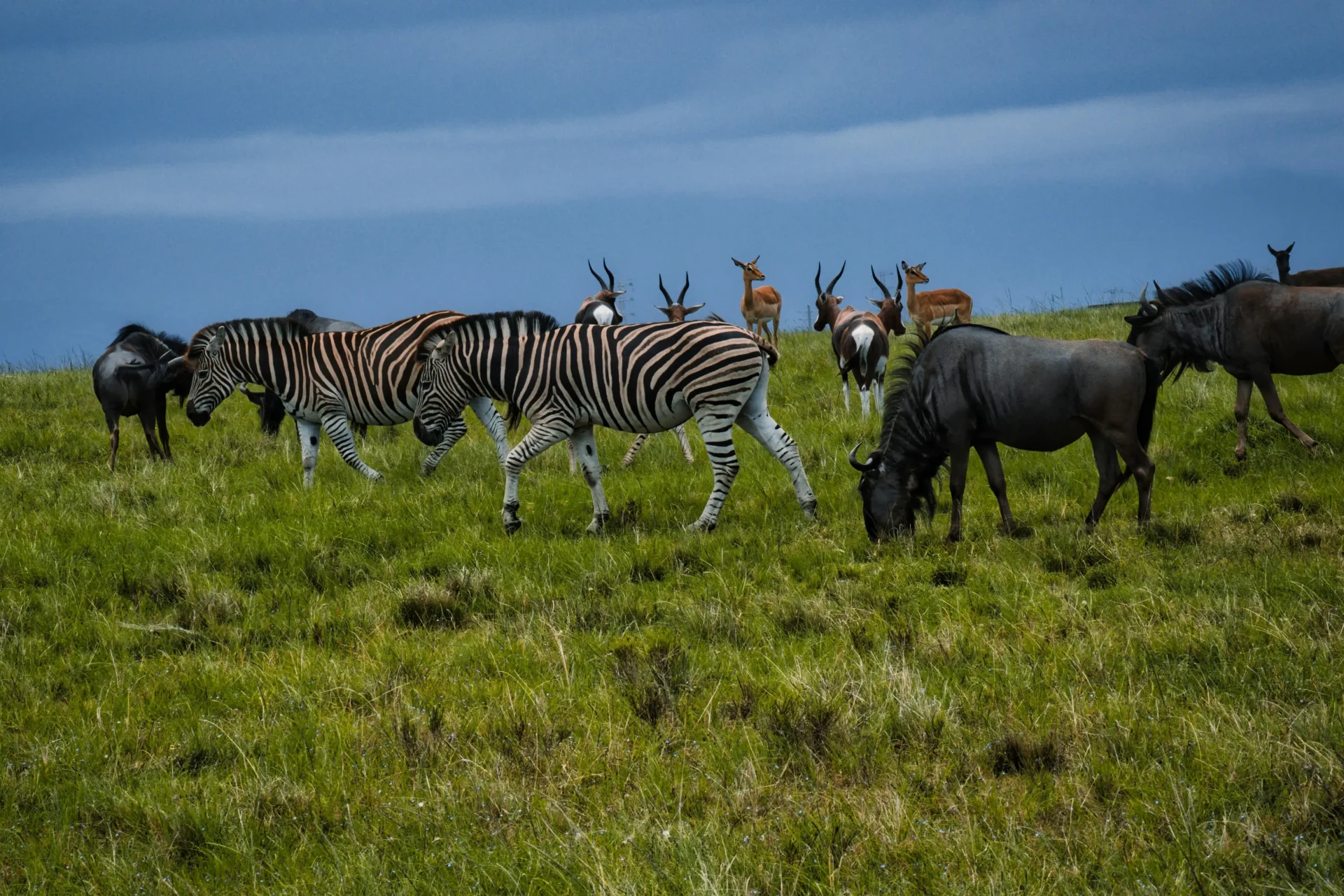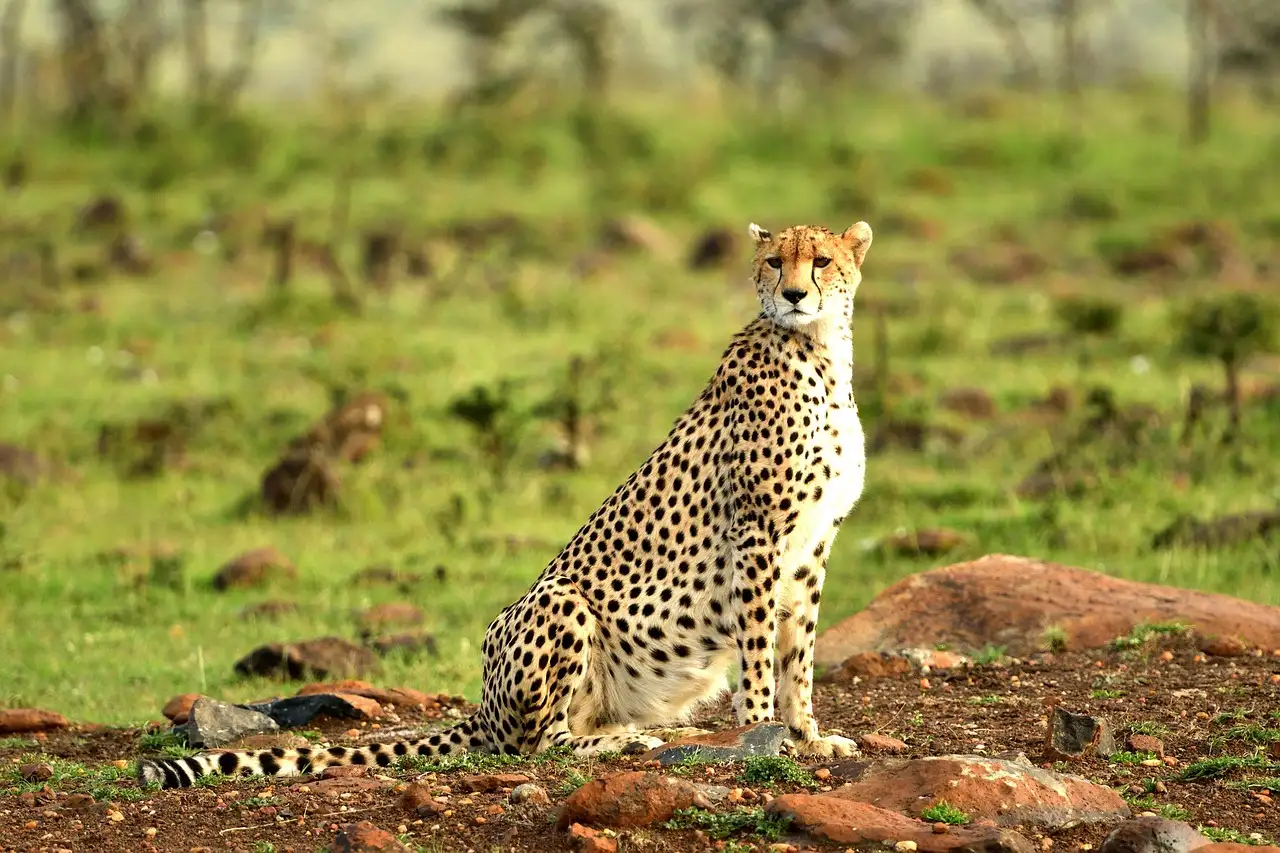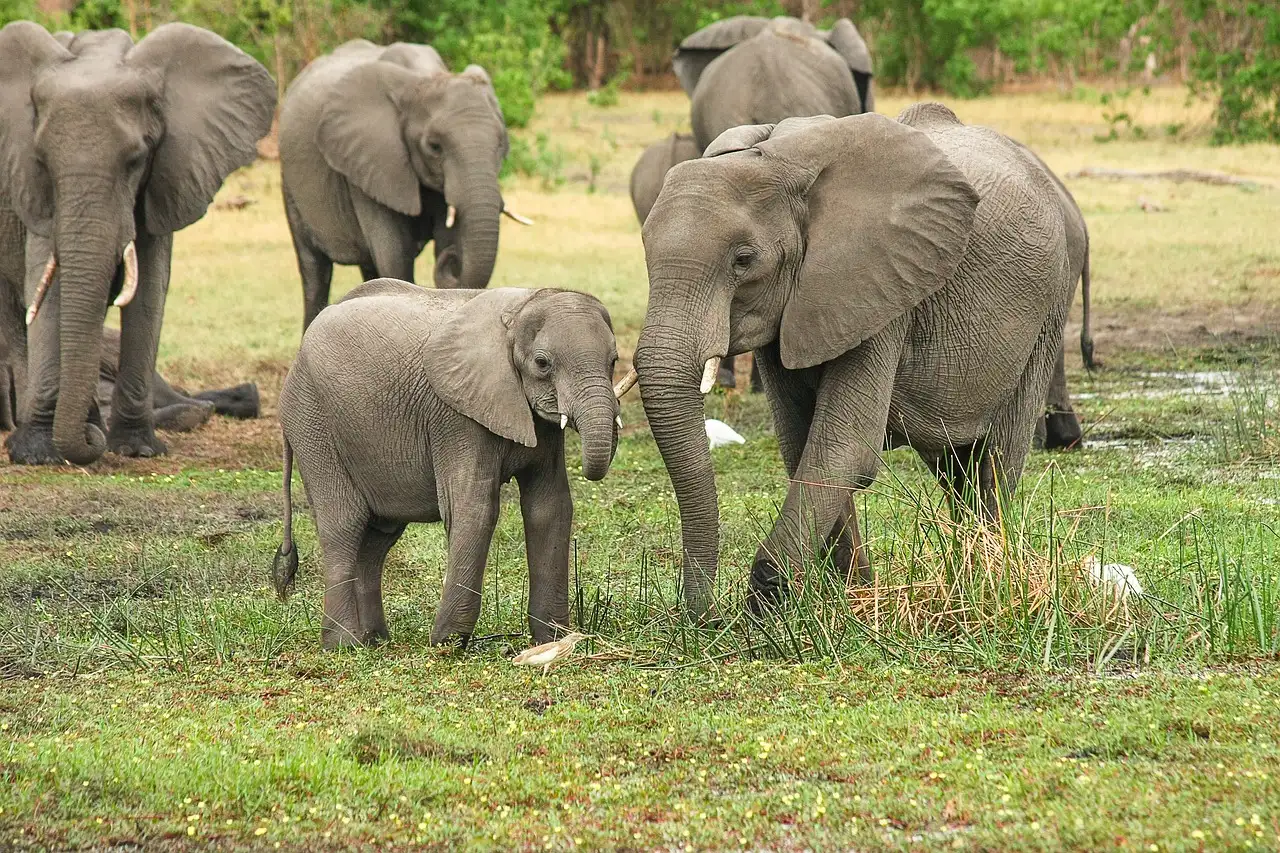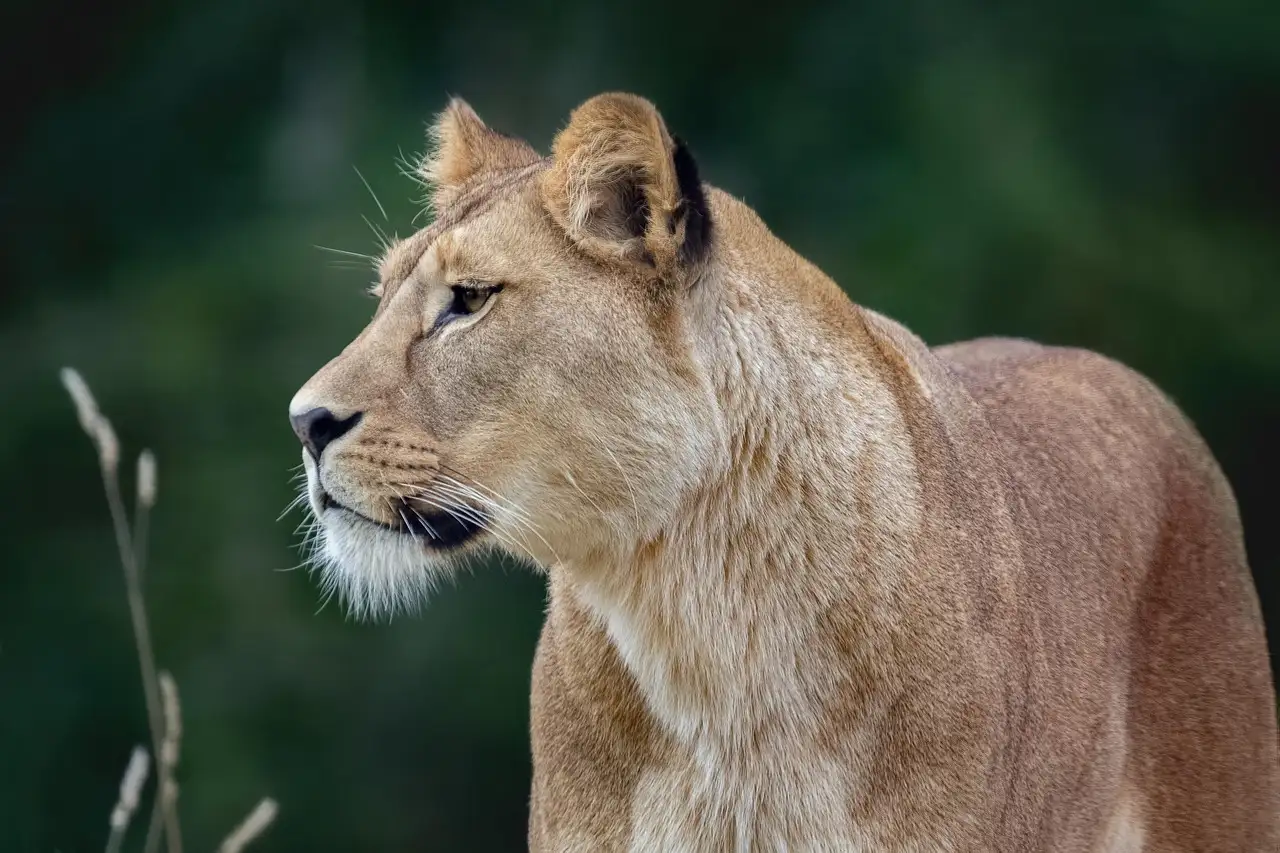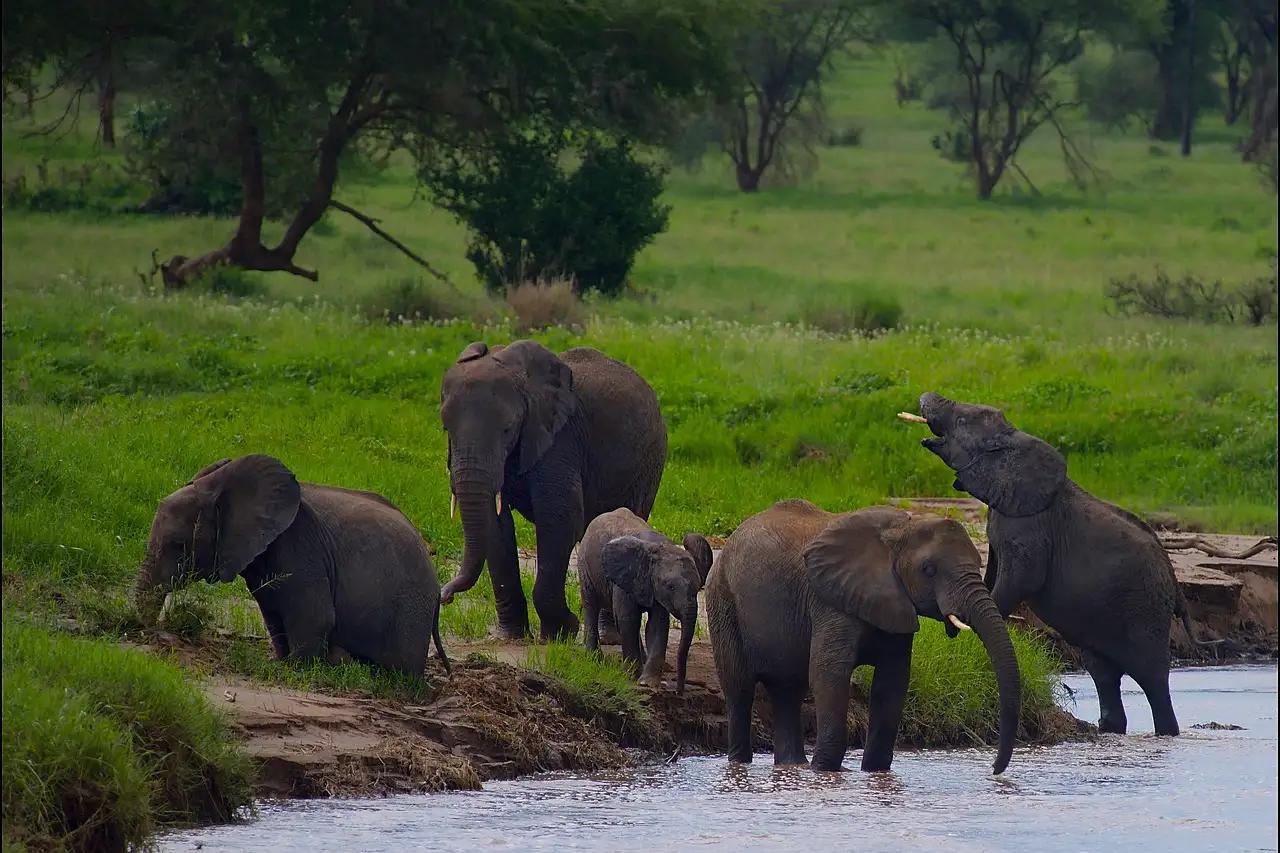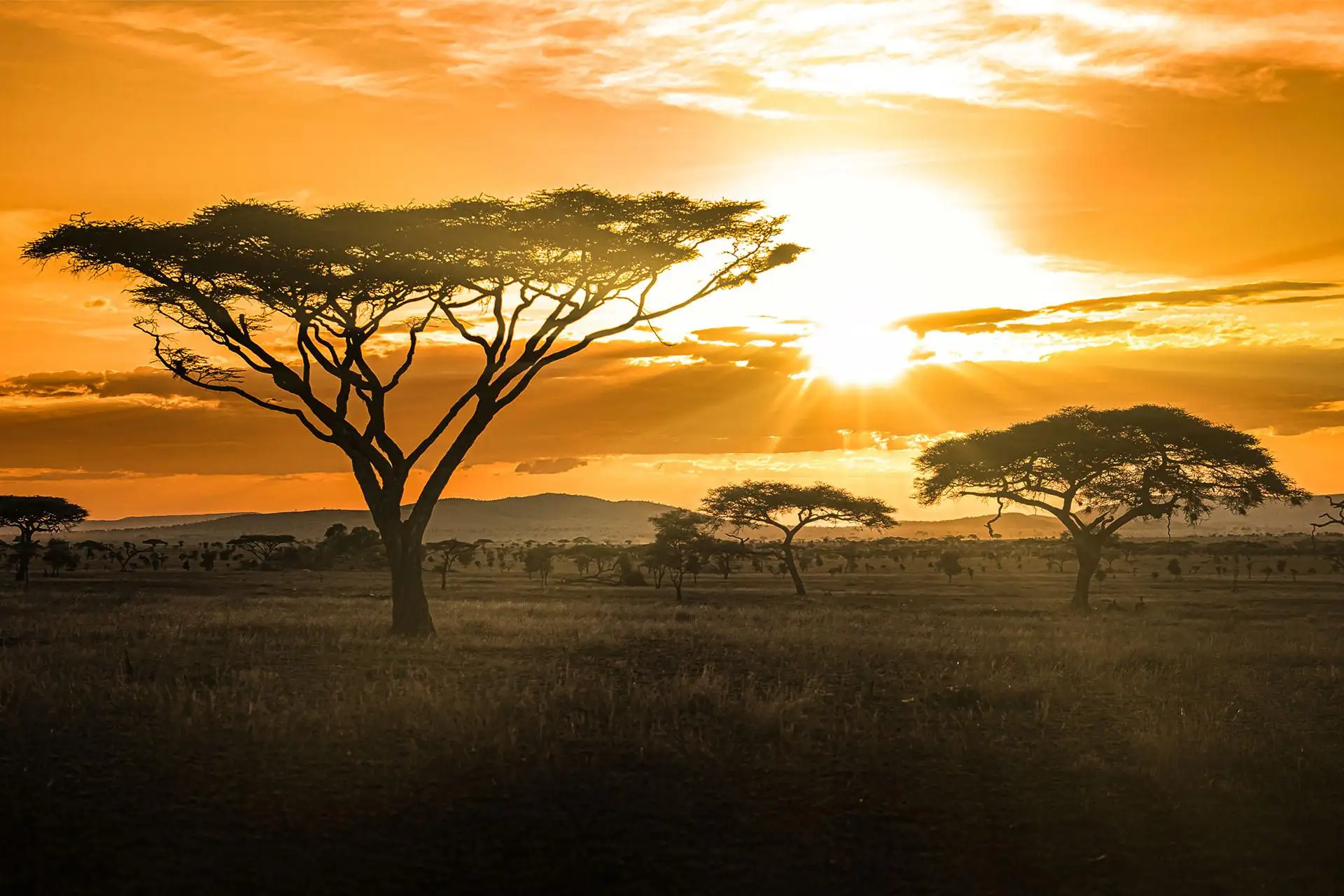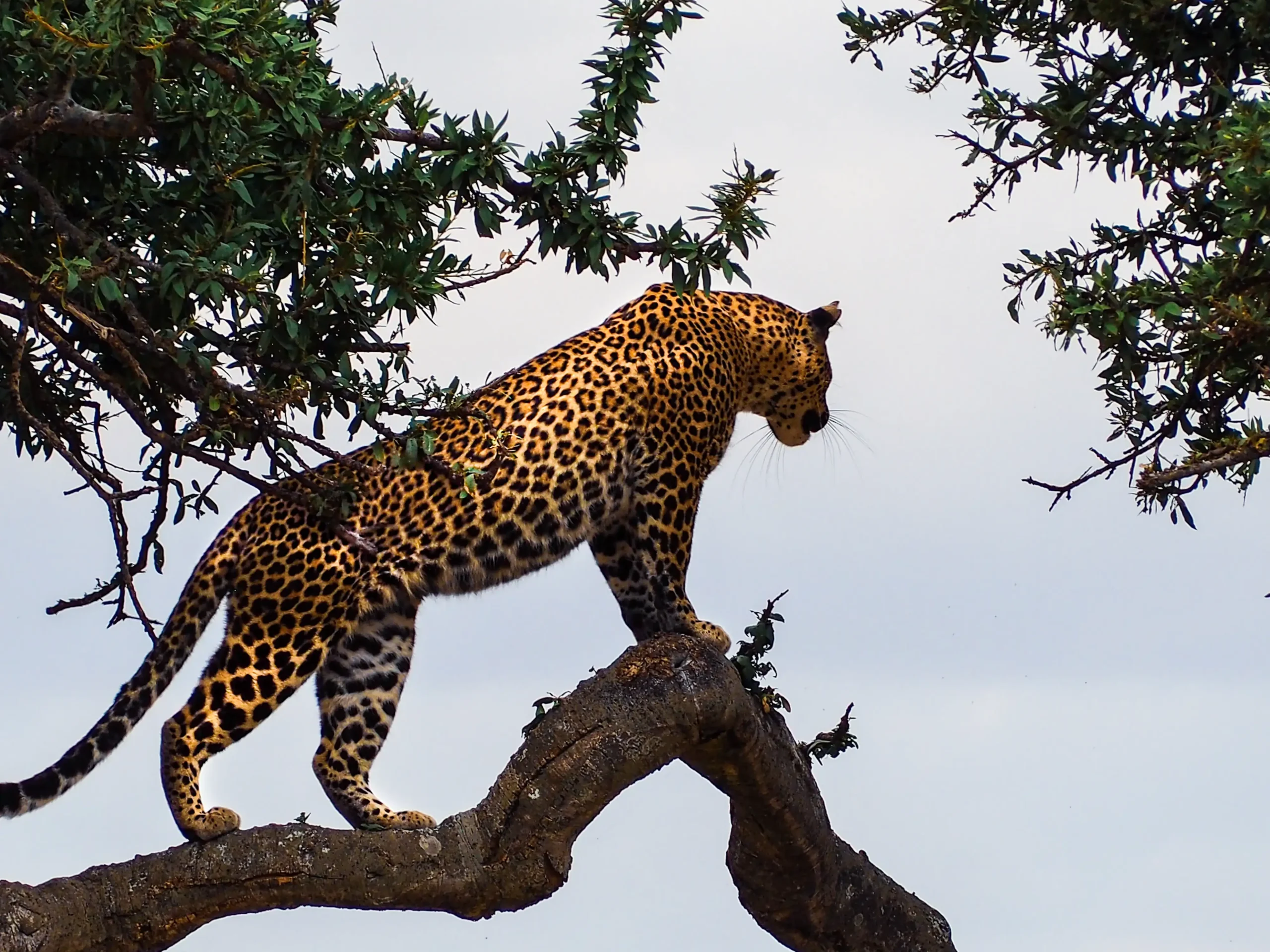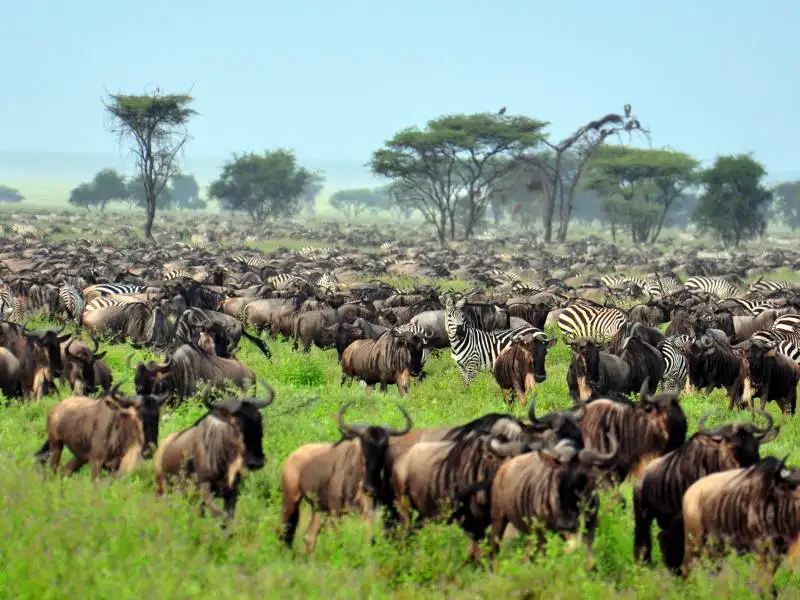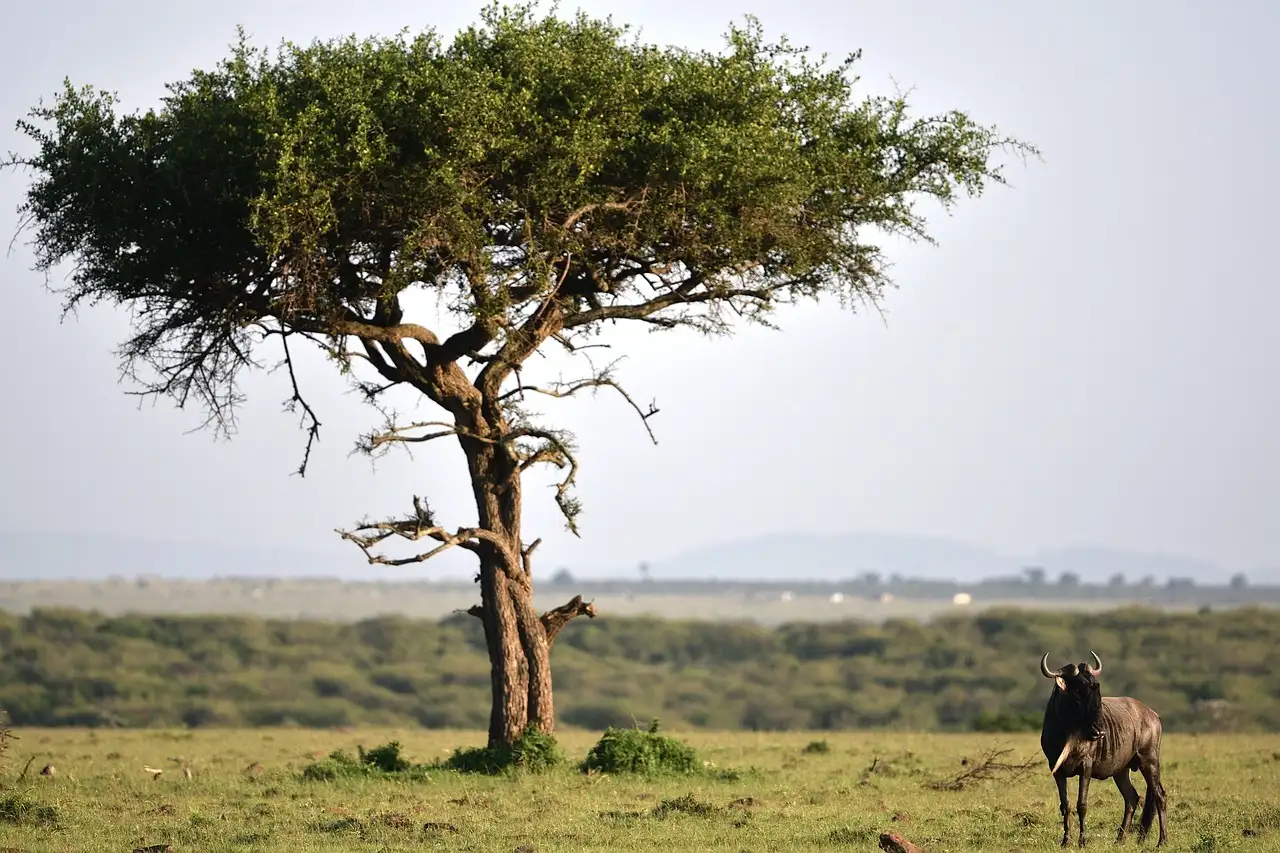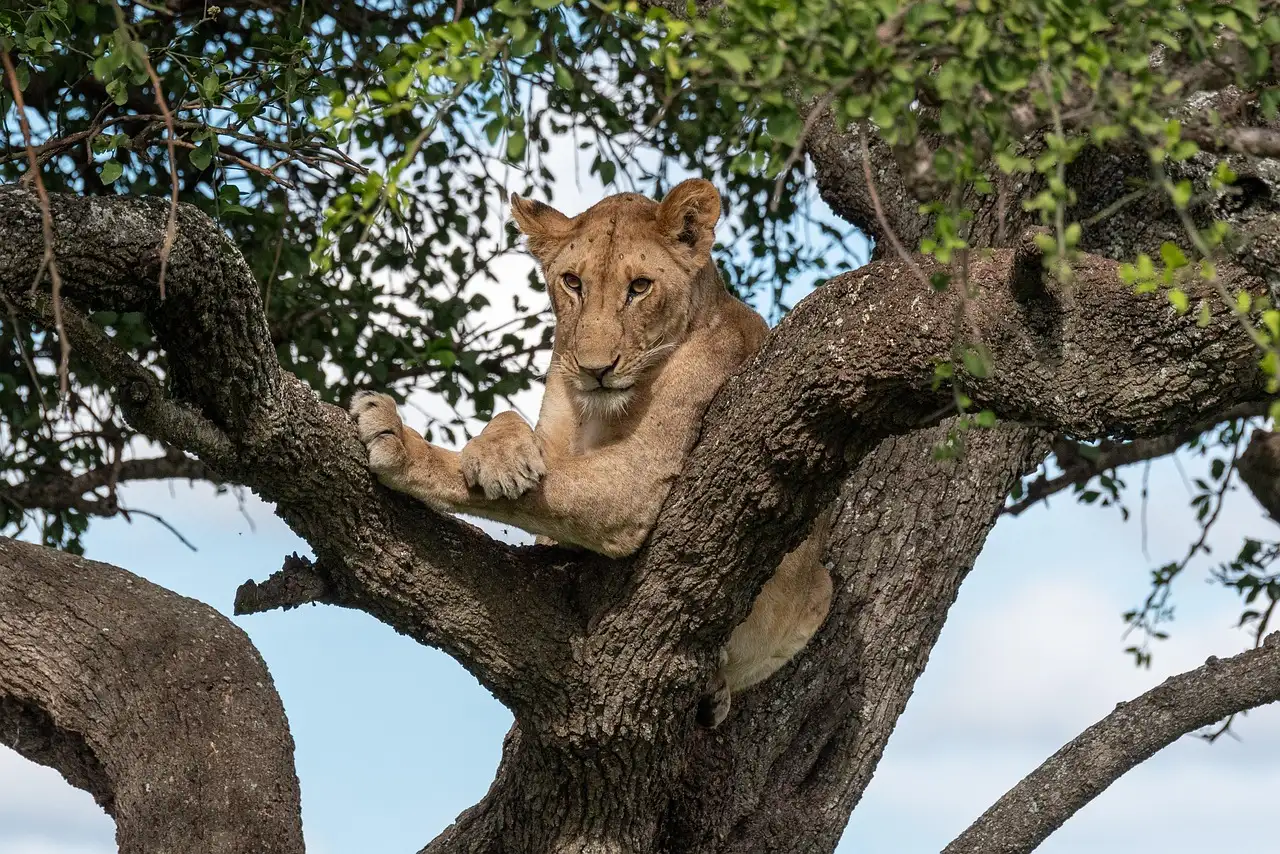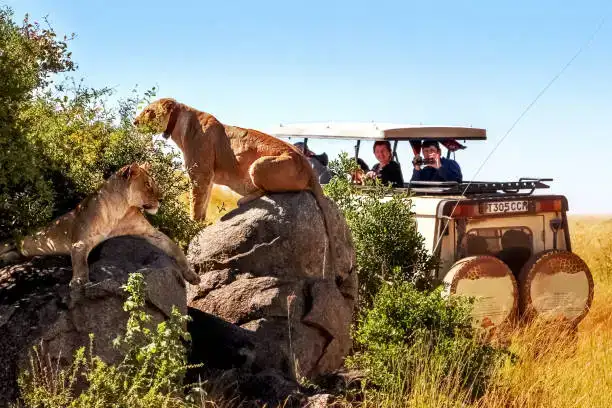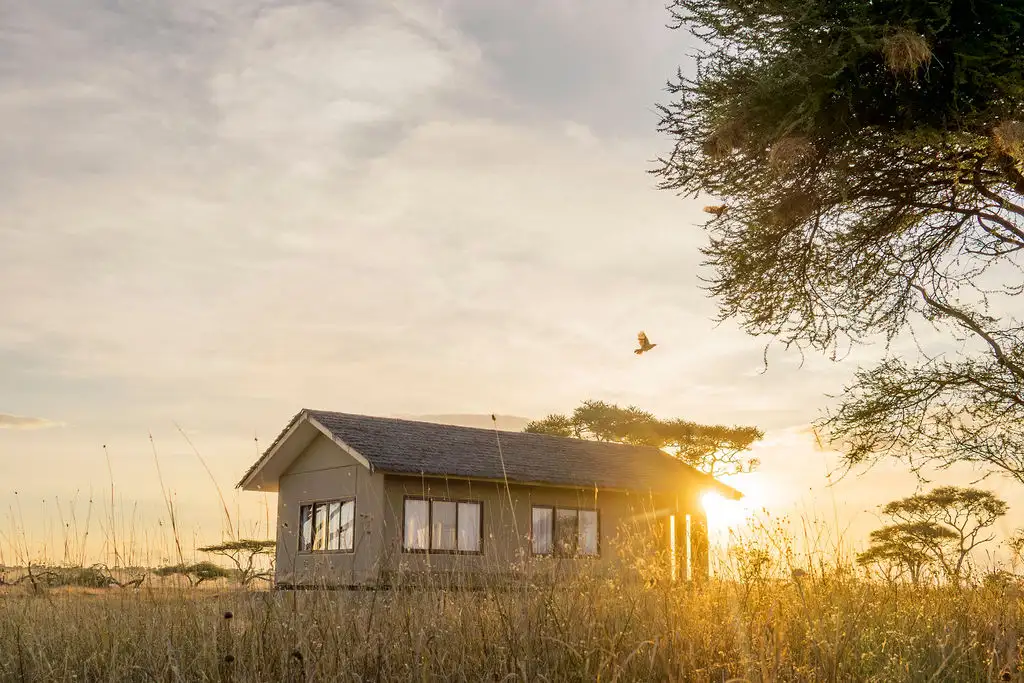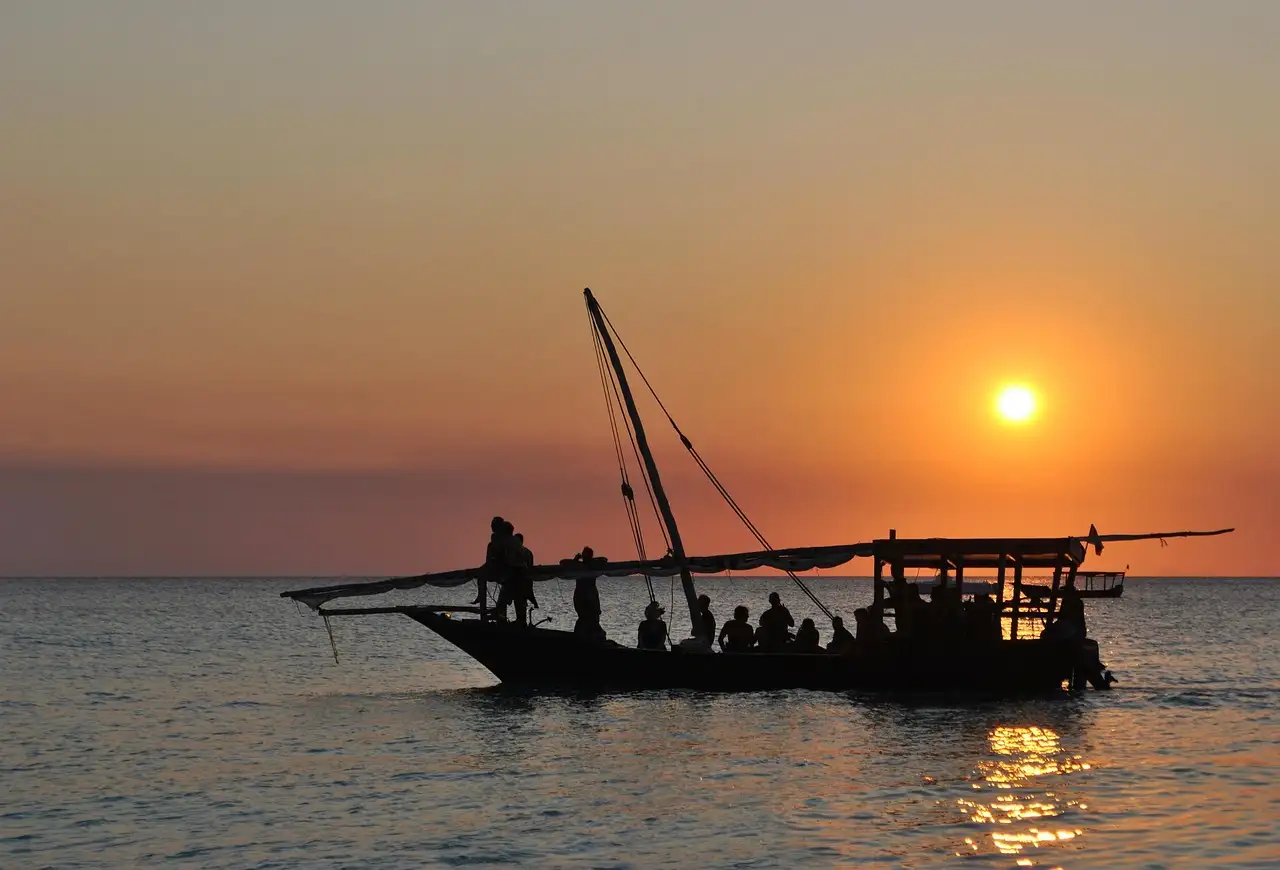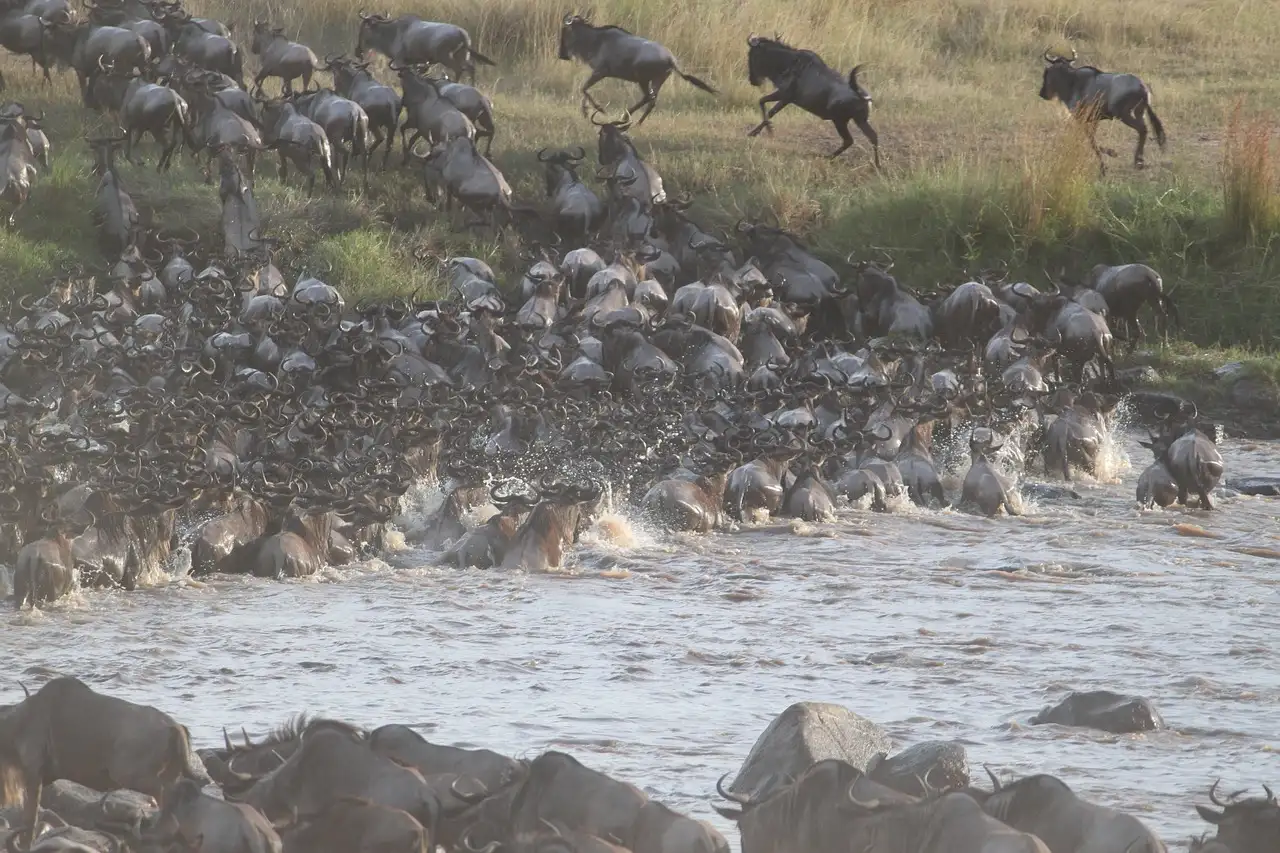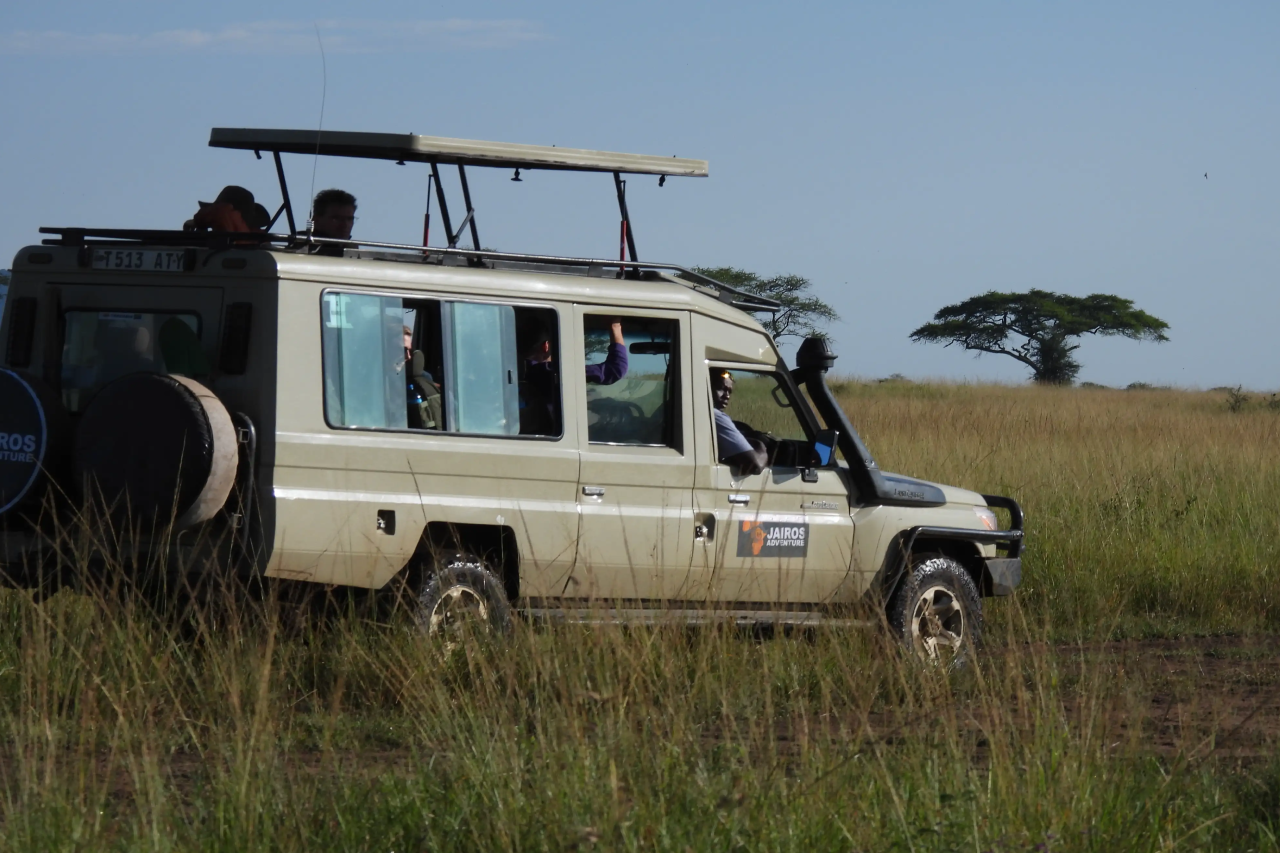Top Safari Destinations in Tanzania
Tanzania Travel Guide for top safari destinations in tanzania
Tropical Beaches, the Big Five, and the Wildebeest Migration
In Tanzania, safaris can be found practically anywhere. In the second-largest nation in East Africa, it has long been a way of life. Tanzania boasts a diverse range of wildlife and landscapes that few other African destinations can match. A Tanzania safari offers an incredible array of experiences, ranging from the beaches and coral reefs of Zanzibar to the traditional savannah locations of the Serengeti, Tarangire, and Ngorongoro Crater. And that’s before you find the hidden treasures, such as chimpanzee trekking in the unspoiled rainforests of Mahale and Rubondo, or uncrowded game viewing in the stunningly untamed and distinctive settings of Nyerere (formerly Selous) and Ruaha.
Location: Where is Tanzania?

The second-biggest nation in East Africa, Tanzania, is a popular safari destination on the continent. It is located on the beautiful Indian Ocean coast and borders Kenya, Uganda, Rwanda, Zambia, Malawi, and Mozambique, among other amazing safari destinations.
Top Experiences in Tanzania
Witness the Great Wildebeest Migration

The annual wildebeest migration is one of the best times to visit Tanzania because it is the best time to see wildlife. The migration is the most amazing display of nature at its best and is the main event on most first-time Tanzania safari itineraries. As they move around the Serengeti-Mara ecosystem in search of fresh grazing, about 2 million wildebeest, zebra, and antelope have to deal with predators. This amazing event is one of the last big movements of animals on land on Earth. The herds are so big that you can see them from space!
The majority of the Migration takes place in Tanzania’s premier conservation area, the Serengeti National Park.
In order to remain as close to the herds as possible, mobile camps move frequently.
River crossing points are easily accessible from certain lodgings.
Note: There aren’t many well-located safari camps available during the river crossing season, which runs from June to October. You should reserve your Tanzania safari at least a year in advance if you want to see the breathtaking river crossings up close. Or choose to visit during the time when the herds give birth and graze their way across the plains; this is easier to ensure and equally impressive to witness, and there are fewer tourists. Speak with one of our Africa Safari Experts to arrange your vacation to align with the
Excellent Year-round Game Viewing, including the Big 5

Tanzania is home to a wide variety of wildlife, intriguing cultures, and breathtaking scenery. From the world-famous Ngorongoro Crater and Mount Kilimanjaro (Africa’s highest mountain) to the traditional, expansive savannah of the Serengeti and the shores of Lake Manyara fringed with flamingos, it’s a dream destination.
Additionally, it provides experiences that are on every Tanzania safari guide’s bucket list, such as game viewing in the remote wildernesses of Katavi, Ruaha, and Nyerere National Park (Selous) and chimpanzee trekking in the rainforests of Mahale and Gombe.
Tanzania's best wildlife safari destinations are:
Tanzania's Best Wildlife Safari Destinations
Handpicked parks and reserves with standout reasons to visit.
| Destination | Why Go |
|---|---|
| Ngorongoro Crater |
|
| Tarangire National Park |
|
| Lake Manyara National Park |
|
| Ruaha National Park |
|
| Nyerere National Park (Selous) |
|
| Mahale Mountains National Park |
|
| Serengeti National Park |
|
Go Off the Beaten Path
For adventurous safari travelers and those who have already visited the more well-known locations in Northern Tanzania, Tanzania’s lesser-known parks and reserves are perfect. Tanzania’s unexplored safari destinations, ranging from savannahs and swamps to rainforests and lakes, offer amazing wildlife encounters away from the crowds. Additionally, you can engage in activities that are prohibited in national parks like the Serengeti, such as fishing, walking, boating, safaris, off-roading, and night drives.
Explore Tanzania’s best-kept secret, Ruaha National Park, which is home to the largest population of elephants in the nation.
See Nyerere National Park (Selous Game Reserve), one of the most significant wild dog sanctuaries in Africa.
Chimpanzee trekking is one of Tanzania’s most distinctive safari experiences; travel to the Mahale Mountains or Rubondo Island.

End Your Safari on a Tropical Island
Many Tanzanian safaris conclude with a leisurely stay on a beach fringed with palm trees and lapped by the warm, azure waters of the Indian Ocean. A sun-kissed tropical island is the perfect place to take stock of your amazing safari experience before returning to daily life. Safari days can be long and dusty. After breakfast, you can effortlessly take a plane from a Tanzanian safari camp and arrive at a pristine beach in time for sunset cocktails.
One of the most romantic honeymoon spots in the world is Zanzibar.
Mnemba Island is a private island paradise for vacationers.
One of the top diving destinations in the world is Pemba Island.
Swim with migratory whale sharks on Mafia Island (October to April).
Climb Africa's Highest Mountain

In addition to being the highest mountain in Africa, Mount Kilimanjaro is the world’s highest free-standing mountain. Climbing to the “Roof of Africa,” which rises nearly 6 kilometers (4 miles) above Tanzania’s plains, can take five or more days. Numerous routes lead to the summit, each with its own degree of difficulty, climbing time, crowding, and scenic beauty. Talk to one of our experts about organizing a Kilimanjaro hike according to your preferences and skill level. In adjacent parks and reserves, we can effortlessly integrate your Kili experience with a Tanzanian safari.
Budget: What Does a Tanzania Safari Cost?
Tanzania’s wildlife and natural beauty make it an unforgettable safari destination – and if you would like to contribute to its conservation for future generations to enjoy, we have a few itineraries that offer the best of both worlds. From participating in research activities to meeting and engaging with Maasai tribes, our trips with a purpose in Tanzania ensure you enjoy the best of an African safari while leaving the wilderness better than you found it.
Pro Advice
Ready to Turn This Safari Guide into a Real Adventure in Tanzania?
With over 25 years of traversing safari destinations under their belt, our African Safari Experts are perfectly positioned to craft a Tanzania holiday that ticks all your boxes. Get in touch and start planning the safari of your dreams:
Need any help with Safari planning?
Get Your Custom Quote
10 Best Places to Visit in Tanzania
Tanzania provides visitors with some of the most varied safari experiences in Africa, from seeing millions of wildebeest, zebra, and other antelope move across the Serengeti plains to climbing to the snow-capped summit of Mount Kilimanjaro or enjoying a refreshing drink on the white sand beaches of Zanzibar.
Tanzania, a dynamic and stunning nation with outstanding parks and reserves, is endowed with the winning combination of stunning tropical beaches and unmatched game viewing. Tanzania’s enormous size (nearly 1.5 times that of Texas) makes it easier to categorize the main vacation spots there into four regions:
- Northern Safari Circuit – the most popular Tanzania safari route comprising the Serengeti, Ngorongoro, Lake Manyara, Tarangire and Kilimanjaro.
- Tanzania Coast and Islands – the country’s beaches, especially those on islands like Zanzibar, are breath-taking and very accessible.
- Southern Tanzania – includes the wonderfully wild and underrated Nyerere (previously Selous) and Ruaha, some of the best-kept Tanzania safari secrets.
- Western Tanzania – head to the far-flung corners of Katavi and Mahale for the ultimate off-the-beaten-path Tanzania safaris.
What you want to see and do while on safari in Tanzania, as well as the best time of year to travel there, will determine where you go. Both Southern and Western Tanzania are undiscovered treasures of this diverse destination, even though the Northern Safari Circuit is a favorite among both novice and seasoned safari travelers.
1. Serengeti National Park: A Safari Superstar
Synonymous with safari, the Serengeti is where to go in Tanzania for game viewing at its most dramatic. Hosting the lion’s share of the Wildebeest Migration (from about January to September), the Serengeti’s sheer size, accessibility, top-quality lodges and camps, and year-round abundance of wildlife make it one of the best safari destinations in Africa. It’s also a regular stop on the best Tanzania safari tours.
2. Ngorongoro Crater: Haven for the Big 5
Take about 30 000 animals and place them inside the crater of an extinct volcano. The Ngorongoro Crater is created by combining wetlands, forest, grasslands, and some incredible cliff-top lodging. This amazing safari destination in Tanzania provides exceptional game viewing in a setting that is truly unique. It’s renowned for delivering the easiest and most reliable Big 5 sightings in East Africa, and it provides what is arguably the best safari in Tanzania.
3. Tarangire National Park: Home of giant
Close to Lake Manyara and the Ngorongoro Crater, Tarangire is worth much more than the usual day visit. During the June to October dry season, animal – especially elephant – concentrations along the Tarangire River are among the highest in the country. The park’s bird count of more than 500 species means that a visit here is one of the most rewarding Tanzania safaris for twitchers, while its full range of large predators complete the appeal. Tarangire is a beautifully diverse wilderness featuring riverine forest, huge swamps and open woodlands that include Africa’s iconic baobab trees.
4. Lake Manyara National Park: Home to Tree-climbing Lions
Lake Manyara, which is a part of Tanzania’s well-known Northern Safari Circuit, provides simple game viewing in a stunning environment. Numerous large animals can be found in the park, such as buffalo, giraffes, hippopotamuses, elephants, leopards, and its well-known tree-climbing lions. A great place to go bird watching is Lake Manyara. In addition to the floodplains, woodlands, and evergreen forests being equally vibrant, you can frequently spot flocks of pelicans and flamingos in the center of the lake.
5. Zanzibar and Tanzania Islands: Indian Ocean Bliss
Enjoy a stay on Zanzibar, Tanzania’s Spice Island, to top off your East Africa safari. It’s the place to go in Tanzania for stunning beaches and coral reefs, sunset dhow (traditional boat) trips, and perusing aromatic backstreet markets. It’s ideal for both families and honeymooners. The other islands in Tanzania’s Indian Ocean will also not let you down. Superlative beach vacation spots like Pemba, Mafia, and Chole offer excellent diving, upscale boutique lodging, and all the decadent pampering you could want.
6. Ruaha National Park: A Hidden Gem
What distinguishes Ruaha from other safari locations is its untamed and untamed nature. Despite being Tanzania’s largest national park, this hidden gem has very few safari camps. You won’t see other tourists around – only a plethora of animals like buffalo, giraffe, kudu, sable, roan, lion, cheetah and leopard. The largest population of elephants in Tanzania can be found there, and rare African wild dogs call it home.
7. Nyerere National Park: A Wild Dog Sanctuary
Africa’s largest game reserve, larger than Switzerland, is Nyerere National Park (formerly Selous). Its lifeblood, the enormous Rufiji River, creates a complex system of lakes, swamps, and channels that give rise to one of East Africa’s most exquisite ecosystems. Along with being one of Africa’s most significant sanctuaries for endangered wild dogs, the reserve is home to buffalo, hippo, crocodiles, and lions. Don’t pass up a fly-camping trip, guided walk, or boat safari in this magnificent wilderness.
8. Lake Tanganyika: Rainforests and Chimpanzees
The Great Rift Valley’s mountainous walls enclose the longest freshwater lake in the world. The Mahale Mountains and Gombe Stream National Parks‘ lakeside location makes it one of the planet’s most biologically diverse habitats. These two remote locations are well worth the travel time because they offer some of Tanzania’s most distinctive safari experiences, including amazing chimpanzee trekking and wildlife viewing in tropical rainforests.
9. Mount Kilimanjaro: Africa’s Tallest Peak
The famous Mount Kilimanjaro will evoke strong emotions in you, regardless of whether you are happy to stand in its powerful shadow or long to ascend to its frozen summit. It is the highest mountain in Africa and the highest free-standing mountain in the world, standing at 5,895 meters (19,340 feet). However, its snow-capped summits are much easier to reach than you might imagine. Technical climbing is not necessary if you climb Kili during the dry season, which runs from July to October or January to March. However, planning and carrying out a hike to the top does require some logistical preparation.
10. Arusha: A Gateway to Safari
Since logistics frequently require an overnight stay in or near the city, almost everyone traveling to the Serengeti, Ngorongoro Crater, and Lake Manyara includes a stop in Arusha, Tanzania’s undeniable safari capital. Arusha, which is situated beneath Mount Meru, has two airports: Kilimanjaro International Airport, which serves as its own international airport, and Arusha Airport, which is smaller and used for charter flights to final destinations. You’ll have plenty of chances to visit local sites of interest, engage in cultural activities, and purchase souvenirs if you spend some time in Arusha.
What distinguishes Ruaha from other safari locations is its untamed and untamed nature. Despite being Tanzania’s largest national park, this hidden gem has very few safari camps. You won’t see other tourists around – only a plethora of animals like buffalo, giraffe, kudu, sable, roan, lion, cheetah and leopard. The largest population of elephants in Tanzania can be found there, and rare African wild dogs call it home.
Pro Advice
Combine northern safari parks with Zanzibar or Mafia Island for the perfect Tanzania itinerary. For wildlife photographers or migration followers, build your dates around the seasonal movements.
Need any help with Safari planning?
Get Your Custom Quote
When is the Best Time to Go to Tanzania?
The dry season, which runs from late June to October, is the ideal time of year to go on safari in Tanzania. The “long rains” (April to May) and the “short rains” (November to December) are Tanzania’s two distinct rainy seasons. Tropical downpours typically occur in the afternoons due to the nation’s “long rains,” and some safari camps may have to close. Occasionally, there is a brief shower due to the “short rains.”
The majority of Tanzania’s safari regions experience pleasant days and refreshing nights all year long. The country’s lakeside areas and Indian Ocean coast are hot and muggy, while Mount Kilimanjaro and Mount Meru experience below-freezing temperatures.
Where you want to go and what you want to see will determine the ideal time of year for a Tanzanian safari. The dry season is typically the ideal time of year for first-time safari visitors to Tanzania because it is easier to track and spot wildlife. Knowing the difference between the safari high season and low season is a great place to start, regardless of whether this is your first time visiting Tanzania.
Month by Month Guide for Travelling to Tanzania:
Travelling to Tanzania during January to March

January is one of the greatest months to travel to Tanzania’s coast if you’re looking for a tropical beach vacation. A vacation in Zanzibar means azure waters, powder-soft sand beaches, and complete relaxation. In order to give birth to their calves, the herds of wildebeests typically migrate into the southern Serengeti during the first month of the year.
The calving season begins in February, when thousands of wildebeest give birth to their young while predators wait. The weather is hot and muggy. During this time, about 500,000 calves of wildebeest are born. The first tentative steps of new life are being taken on the plains.
In Tanzania, March is a very hot month with dry spells early in the month, though in past years, the “long rains” have arrived early. In stark contrast to the brown texture of the terrain, the landscape turns an unearthly green during the summer. Mornings are pleasant in the Ngorongoro Highlands, where late afternoon rainfall is brief and intense. Another popular month for climbing Mount Kilimanjaro is March.
Visiting Tanzania in April & May
April is by far the wettest month of the year, and although afternoon thunderstorms are the most common form of precipitation, there are often large storms at night as well as a lot of overcast days. Although the humidity is highest in the western and southern parks throughout the year, if you decide to travel during this time, Tanzanian tours and lodgings are very reasonably priced.
Although May is still quite wet at the beginning, as June ushers in the dry season, things do begin to dry out toward the end of the month. The Great Migration treks from the southern Serengeti to the western corridor during this month.

Visiting Tanzania from June to August
June is regarded as the ideal time of year to travel to Tanzania for luxury safaris because it is dry and crowded. As the vegetation gradually disappears, wildlife sightings improve, the savannahs are beginning to turn from green to yellow, and the rains are coming to an end. It’s possible that the Wildebeest Migration paused at the Grumeti River to gather more animals before attempting their risky crossings.
The best time to visit Tanzania for great weather and game drive opportunities, as well as to combine a Kenya and Tanzania safari, is in July, when the busiest safari season is in full swing. In order to prepare for its major event—crossing the perilous waters of the Mara—the Great Migration ought to have arrived in the northern Serengeti.
August is still considered peak season with tourist crowds flocking to the northern safari circuit (Tarangire, Ngorongoro Crater and Serengeti) and Zanzibar. Wildlife viewing is sensational, and the herds of the Great Migration should have started to cross the Mara River.
Travelling to Tanzania during September and October
Since there is still no rain and the tourist crowds start to thin out in September, the humidity is low, which means there are fewer mosquitoes. Elephants can be found in large numbers in Tarangire National Park, and September is another ideal month for hikers hoping to climb Kilimanjaro. Additionally, the fishing season in Tanzania’s great lake regions begins this month.
The first rains arrive in October, and thunderclouds begin to form. The best time to visit Tanzania to see chimpanzees is in Mahale Mountains National Park during this month, when Lake Tanganyika is at its warmest. This is the ideal time of year to visit Arusha National Park if you want to climb Mount Meru.

Visiting Tanzania in November & December
One of Tanzania’s most underappreciated safari months is arguably November. Although there will be rain, it will typically only be in the form of afternoon thunderstorms. Game viewing in Tanzania’s northern parks is generally excellent throughout the year, and this month is a good time to explore some lesser-known locations.
In contrast to the two weeks over Christmas and New Year’s, December is typically quiet at the start of the month and falls in the middle of the “short rains.” As the migratory birds begin to arrive, December is the ideal month for birdwatching, especially in the Tarangire and Nyerere National Parks. The southern Serengeti’s short grass plains are once again the site of the Great Migration. Watching them feast in anticipation of calving and bringing new life on their year-round circular journey is the perfect time of year for a Serengeti safari in Tanzania.
Pro Advice
Ready to Start Planning your Trip of a Lifetime?
Need any help with Safari planning?
Get Your Custom Quote
Tanzania Safari Travel Advice
At Jairos Adventure, giving our customers objective guidance and exceptional safari experiences is our passion. Our Africa Safari Experts have extensive first-hand knowledge of the places they recommend, are well-traveled, and are permanently stationed in Africa. To make sure these offerings live up to our clients’ expectations, they routinely inspect new lodges, experiences, and activities.
Nothing compares to current, pertinent travel advice straight from an experienced traveler.
Tips for Planning Your Tanzania Safari
- Plan your timing carefully: if you want to see the Wildebeest Migration on your safari or enjoy the best beach weather in Zanzibar, make sure your itinerary matches your travel wishes.
- Book early for high season: Tanzania’s sought-after safari destinations and well-located camps at Wildebeest Migration hotspots get booked out early, often a year in advance.
- Choose your activities: morning and afternoon game drives are standard safari activities, but excursions like night game drives, guided bush walks and hot-air balloon safaris are only allowed in certain areas or camps.
- Expect other visitors in high season: Tanzania’s heavyweight national parks like the Serengeti, Ngorongoro Crater, Lake Manyara and Tarangire can attract a lot of visitors from about June to October. Consider visiting during low or Green Season (about November to March) if you want to escape the crowds and still enjoy great game viewing.
- Go private: if it’s exclusivity you want, then head for one of Tanzania’s private reserves. The accommodation is superb, game viewing is as good as the main parks, and extra safari activities (see number 3) are occasionally offered.
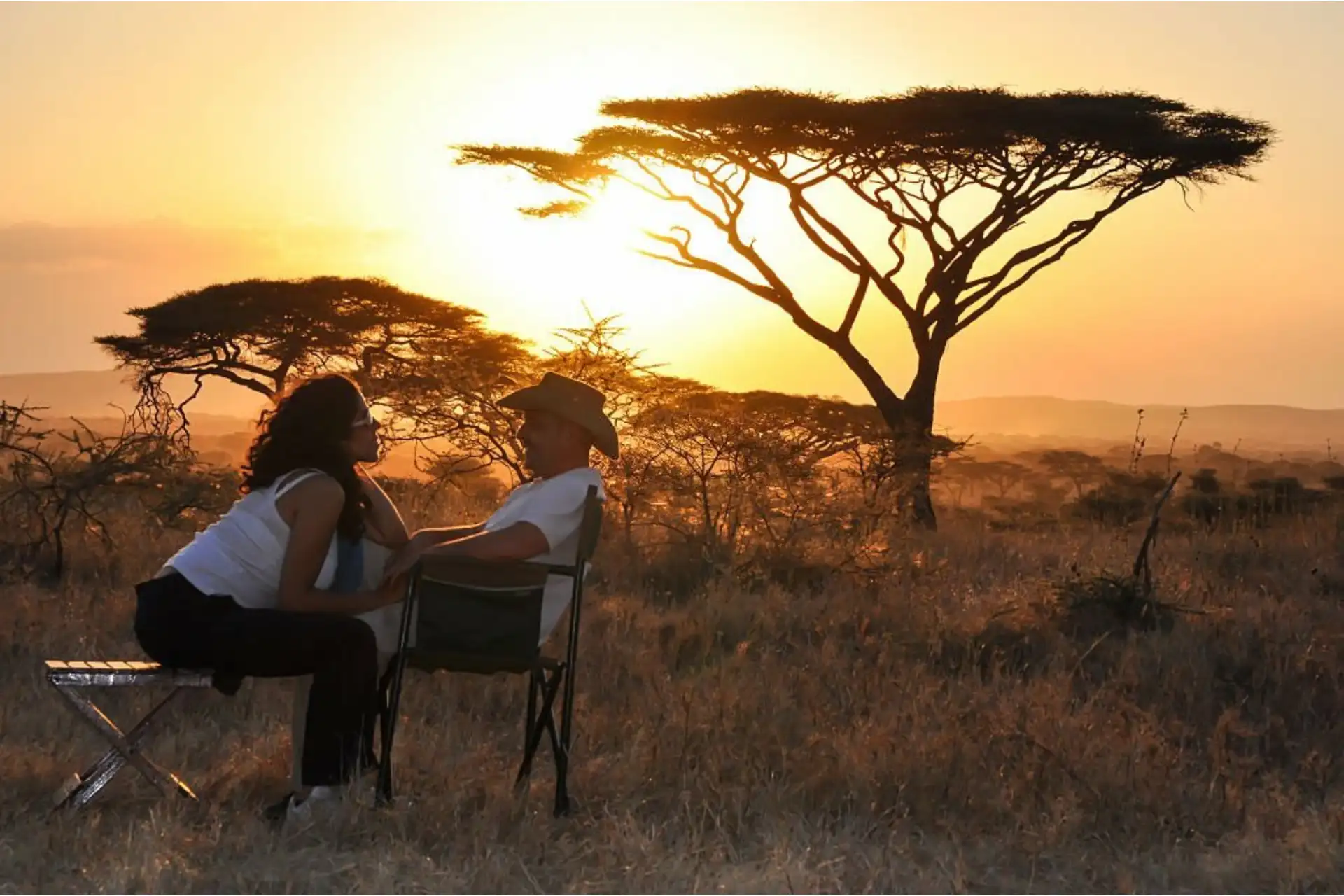
Money and Spending
The Tanzanian Shilling is the country’s currency, but we advise using only US dollars and cash because credit cards and traveler’s checks, while accepted in most places, have transaction fees. Tanzania’s major towns and cities have ATMs, but national parks and game reserves do not.
Note: Tanzania does not accept US dollars printed before 2006.
Tipping lodge staff and drivers/guides is customary for good service on a Tanzania safari, but check first to see whether a service charge has been added to your bill. Tipping is always in addition to the price quoted by your operator and the amount varies depending on the size of your group, the level of luxury of the safari and whether you thought an exceptionally good job was done. When travelling in the major Tanzania cities, a 10% tip is customary in restaurants and bars when a service charge is not included.
Read our in-depth guidelines on tipping in Tanzania or get in touch with one of our Africa Safari Experts for advice.

What to Pack
Light casual attire in sensible, neutral hues and a warm jacket for nighttime game drives are reliable choices for your Tanzanian safari. See our Africa Safari Guide for more information on what to bring on a safari.
When visiting Zanzibar, it’s important for women to dress modestly in main towns out of respect for Muslim cultural beliefs. In general, shoulder-covering t-shirts, long skirts, and capri pants are preferable to tank tops and shorts. Beach wear and bathing costumes are acceptable on the beaches and in resorts.
Etiquette
Religious belief is strong in Tanzania, with Christianity and Islam dominating. Most Muslims live on the coast and in Zanzibar; visitors should be aware of the conservative nature of these destinations – especially Stone Town – and dress and behave accordingly.
Tanzanians are renowned for being friendly and harmonious people, however, it is courteous to ask permission before photographing people.

Main International Airports
Kilimanjaro International Airport – Tanzania’s second international airport – serves the Serengeti, Ngorongoro Crater, Tarangire and Lake Manyara. However, you need to transfer to nearby Arusha Airport for charter flights to these safari destinations. International flights often arrive at Kilimanjaro Airport late in the day, so an overnight stay in Arusha is usually necessary.
Dar-es-Salaam International Airport – Tanzania’s main airport – is the gateway to the Indian Ocean coast and Zanzibar, as well as Nyerere National Park (previously Selous) and Ruaha National Park.
Regional Airports
Arusha Airport – the gateway to northern Tanzania’s safari airstrips – is located about 30 kilometres (18.5 miles) from Kilimanjaro International Airport.
Did you know you can book your flights through Jairos Adventure? For more information and frequently asked questions, please see our Flights page.
Safari Vehicles
Guided road transfers and game drives in Tanzania are conducted in closed 4x4s with big windows and pop-up roofs, although visitors to destinations like Mahale will enjoy a boat transfer across Lake Tanganyika. Most safari destinations have extensive road networks and closed vehicles are therefore the norm when doing long-distance road transfers between airstrips, camps and lodges in Tanzania. A closed 4×4 game drive vehicle generally has three rows of seating and features a pop-up roof hatch that can be raised for game viewing and taking photographs.

Visa and Passport Requirements
Almost all visitors to Tanzania require a visa. You must contact the relevant issuing authorities in good time (ideally, several months in advance) to ascertain the entry requirements to Tanzania, and to arrange the necessary permits and visas. We strongly encourage all clients entering Tanzania via Kilimanjaro International Airport to obtain their visas online at Tanzania Immigration Department before arriving in Tanzania. E-visas can take 2 to 3 weeks to be issued.
Visitors to Tanzania must possess a passport that is valid for six months after the initial date of travel.
More About Tanzania
History and Economy
In many ways, Tanzanian history is the history of humankind. Fossils found at Olduvai Gorge, one of the world’s premier archaeological sites, suggest that Tanzania has been settled by hominids for over 2 million years. Iron Age migrations from West Africa were followed by European and Arabian merchants, missionaries and slavers, and by the mid-1800s Zanzibar had become the centre of the East African slave trade. Colonised first by the Germans and then the British, independence came peacefully to mainland Tanganyika in 1961. The addition of Zanzibar in 1964 created the modern state of Tanzania.
Rich in mineral wealth and natural gas, Tanzania’s economy is nevertheless dominated by agriculture, which employs 75% of the workforce and accounts for half the country’s GDP. Tanzania’s main exports include gold, coffee, tea and cotton. But it’s tourism, increasing in importance year after year, that is the country’s biggest foreign exchange earner.

People and Culture
Some of Tanzania’s 120 ethnic groups make up the African population, with a significant numbers of Asians, Arabs and Europeans too. Even with this mix of identities, Tanzania has long promoted a harmonious national culture, one that is based on a subtle but strong social code of courtesy and respect. English and Swahili are the official languages.
Landscape and Wildlife
Lying between the two arms of the Great Rift Valley, Tanzania’s huge central plateau is bounded on the west by Africa’s great lakes, the north by mountains (including Kilimanjaro, Africa’s highest peak) and the Indian Ocean in the east. Most of the country is covered in grassland, open woodland and savannah, but significant pockets of rainforest exist in remote mountain ranges.
Home to 20% of Africa’s large mammals, Tanzania is one of the continent’s premier game viewing destinations. More than 25% of the country is given over to conservation and several Tanzania animal reserves rank among the biggest in the world. Most visitors head for northern Tanzania, where the most famous and accessible animal reserves are. But it’s in south and central Tanzania where you’ll find huge, virtually unvisited savannah and rainforest reserves that deliver genuine off-the-beaten-track safaris.
Need any help with Safari planning?
Get Your Custom Quote
Welcome to Tanzania
Tanzania Safari Destinations Shine in 2025 Tourism Awards
Tanzania safari destinations have once again proven their world-class status, securing multiple prestigious awards in 2025. Serengeti National Park earned recognition as Africa’s Leading National Park and Africa’s Leading Big Five National Park, thanks to its breathtaking landscapes and the legendary Great Migration. The Ngorongoro Crater was celebrated as Africa’s Leading Tourist Attraction for its extraordinary wildlife and stunning natural beauty. Meanwhile, Mount Kilimanjaro proudly claimed the title of Africa’s Leading Mountain National Park, reaffirming its place as the continent’s highest and most iconic peak.
In total, Tanzania’s leading safari destinations earned four international awards in 2025, a clear sign of the country’s outstanding natural beauty and world-class safari experiences. Whether you are seeking adventure, luxury, romance, or photography, Tanzania offers safaris that continue to be recognized as the very best in Africa.
8. Is the Rongai Route safe?
Umbwe Route: Detailed Guide to Climbing Kilimanjaro
Perfect — let’s expand the accommodation guide to include Mto wa Mbu, Tarangire, Lake Manyara, Ngorongoro, Karatu, and Serengeti, categorized into budget, midrange, and luxury levels. These are all key stops along Tanzania’s famous Northern Safari Circuit.
Accommodation Guide by Region
Mto wa Mbu
- Budget: Campsite (~$25–40) – simple rooms and camping, close to Lake Manyara.
- Midrange: Lodge & Campsite (~$80–120) – comfortable lodge with views of the Rift Valley.
- Luxury: Luxury Lodge (~$250–350) – perched on the Rift escarpment with stunning views of Lake Manyara.
Tarangire
- Midrange: Tented Lodge (~$120–150) – stylish tented lodge near the park entrance.
- Luxury: Tented lodge (~$450–600) – style suites with premium safari service.
Lake Manyara
- Budget: Tented Camp (~$40–60) – rustic tents in acacia forest.
- Midrange: Lodge (~$120–150) – infinity pool overlooking the lake.
- Luxury: Lodge (~$500–700) – exclusive lodge with private conservation area.
Ngorongoro
- Budget: Camping (~$40–70) – basic but cozy, located on the crater rim.
- Midrange: Lodge (~$120–180) – charming lodge with gardens and views of Oldeani Volcano.
- Luxury: Lodge (~$800–1200) – ultra-luxury lodge with opulent suites overlooking the crater.
Karatu
- Budget: lodge (~$30–50) – family-run lodge with warm hospitality.
- Midrange: Lodge (~$100–150) – comfortable lodge with pool and gardens.
- Luxury: Lodge (~$250–400) – elegant lodge with fine dining and lush grounds.
🐾 Serengeti
- Budget: Seronera Campsites (~$30–50) – public campsites inside the park.
- Midrange: Lodge (~$150–250) – large lodge with sweeping views of the plains.
- Luxury: Lodge Serengeti (~$800–1200) – world-class lodge with an infinity pool overlooking a watering hole.
Key Takeaways
- Budget stays: Simple lodges, hostels, and campsites ($25–70).
- Midrange stays: Comfortable safari lodges with pools and good dining ($100–180).
- Luxury stays: Exclusive lodges with premium service and views ($400–1200+).
- Best combo itinerary: Stay in Karatu for Ngorongoro/Manyara access, then move into Serengeti lodges for wildlife immersion, and finish with Zanzibar for beach relaxation.
Would you like me to create a comparison table showing all these regions side by side (budget vs. midrange vs. luxury) so you can quickly compare options at a glance?
Need any help with Safari planning?
Get Your Custom Quote
How Much Does a Safari Cost in Tanzania?
Tanzania is one of Africa’s most iconic safari destinations, home to the Serengeti National Park, the Ngorongoro Crater, and countless other wildlife-rich reserves. But before embarking on this once-in-a-lifetime adventure, travelers often ask: How much does a safari in Tanzania really cost? The answer depends on your travel style, season, and preferences.
Safari Cost Breakdown
- Budget Safaris:
- Around $220–$250 per person per day
- Includes basic lodges or camping, shared vehicles, and simple meals.
- Ideal for backpackers or travelers who want the experience without luxury frills.
- Mid-Range Safaris:
- Average $500–$530 per person per day
- Comfortable lodges or tented camps, private guides, and better dining options.
- Perfect balance of comfort and affordability.
- Luxury Safaris:
- Range from $1,500–$1,600+ per person per day
- High-end lodges, fly-in safaris, gourmet meals, and personalized service.
- Tailored for travelers seeking exclusivity and indulgence.
Factors That Influence Safari Costs
- Seasonality:
- High season (June–October, during the Great Migration) is more expensive.
- Low season (March–May) offers discounts but may have wetter weather.
- Group Size:
- Larger groups reduce per-person costs since vehicle and guide fees are shared.
- Destinations:
- Visiting multiple parks (e.g., Serengeti + Ngorongoro + Tarangire) increases costs due to park fees and transfers.
- Park Fees:
- National park entry fees can add $70–$80 per person per day.
Additional Expenses to Consider
- Flights: International flights to Kilimanjaro or Dar es Salaam are not included in safari packages.
- Tips & Gratuities: Guides, drivers, and lodge staff often expect tips.
- Visas: Tanzania requires a tourist visa (~$50–$100 depending on nationality).
- Travel Insurance: Strongly recommended for medical and trip protection.
Is a Tanzanian Safari Worth It?
Absolutely. Whether you’re camping under the stars or staying in a luxury lodge overlooking the Serengeti plains, the experience of witnessing lions, elephants, and wildebeest in their natural habitat is priceless. While costs vary widely, budget travelers can enjoy safaris starting at $220/day, while those seeking luxury can spend upwards of $1,600/day.
Our Professional Advice
Tanzanian safari can be tailored to almost any budget, with costs ranging from $250/day from to pax for budget trips to over $ 1,600 per day for luxury experiences. The key is to decide on the level of comfort and exclusivity you desire, then plan accordingly.
Would you like me to create a comparison table of safari packages (budget vs. mid-range vs. luxury) to make the differences even clearer?
Need any help with Safari planning?
Get Your Custom Quote
Tanzania Safari Packages
Affordable Tanzania Safari (2~4 Days)
Classic Tanzania Safari (5~7Days)
Tanzania Safari and Zanzibar Packages (8~12 Days)
Start Planning Your Dream Safari and Group Safari
Ready to experience the adventure of a lifetime? Contact our safari specialists to design your perfect Tanzania safari adventure.
Tanzania Group Safari
Join our Tanzania Group Safari and explore famous national parks like Tarangire, Serengeti, and Ngorongoro with expert guides and fellow travelers. If you love adventure, this is your perfect trip!
View Tanzania Group Safari Join Kilimanjaro Climb Groups Contact Us




